TO NET ZERO A PATHWAY



An Australian first is paving the road to meaningful carbon reduction and greater sustainability outcomes across the sector

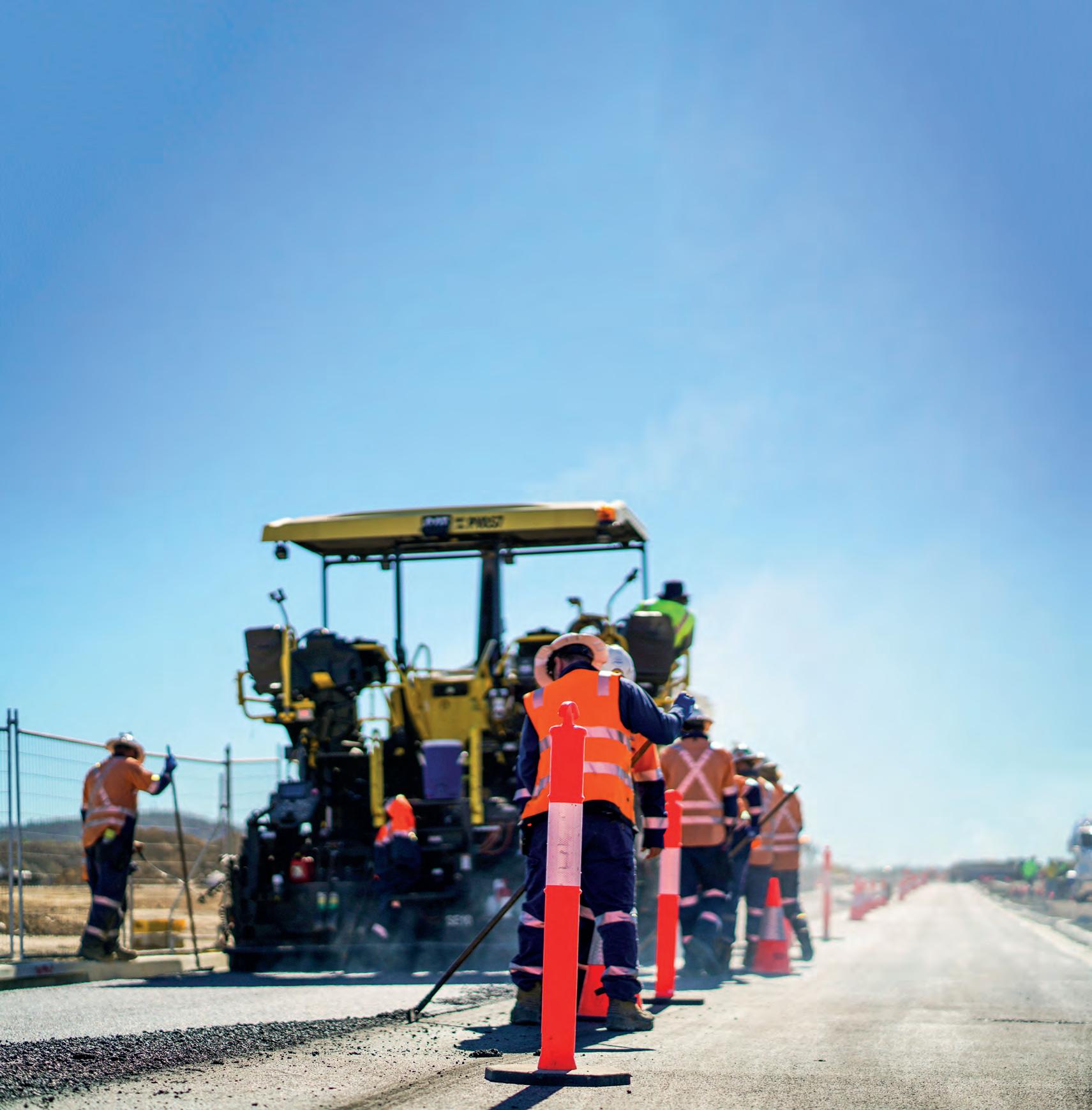
IMPORTANT LEARNINGS
The third rendition of what is now an annual survey paints a positive outlook for the sectors future AHEAD
OF THE GAME
Inside the newest form of traffic management

AUSTRALIA’S ONLY SPECIALIST ROAD MANAGEMENT, CONSTRUCTION AND CIVIL WORKS MAGAZINE AUGUST 2023 Official media partners of
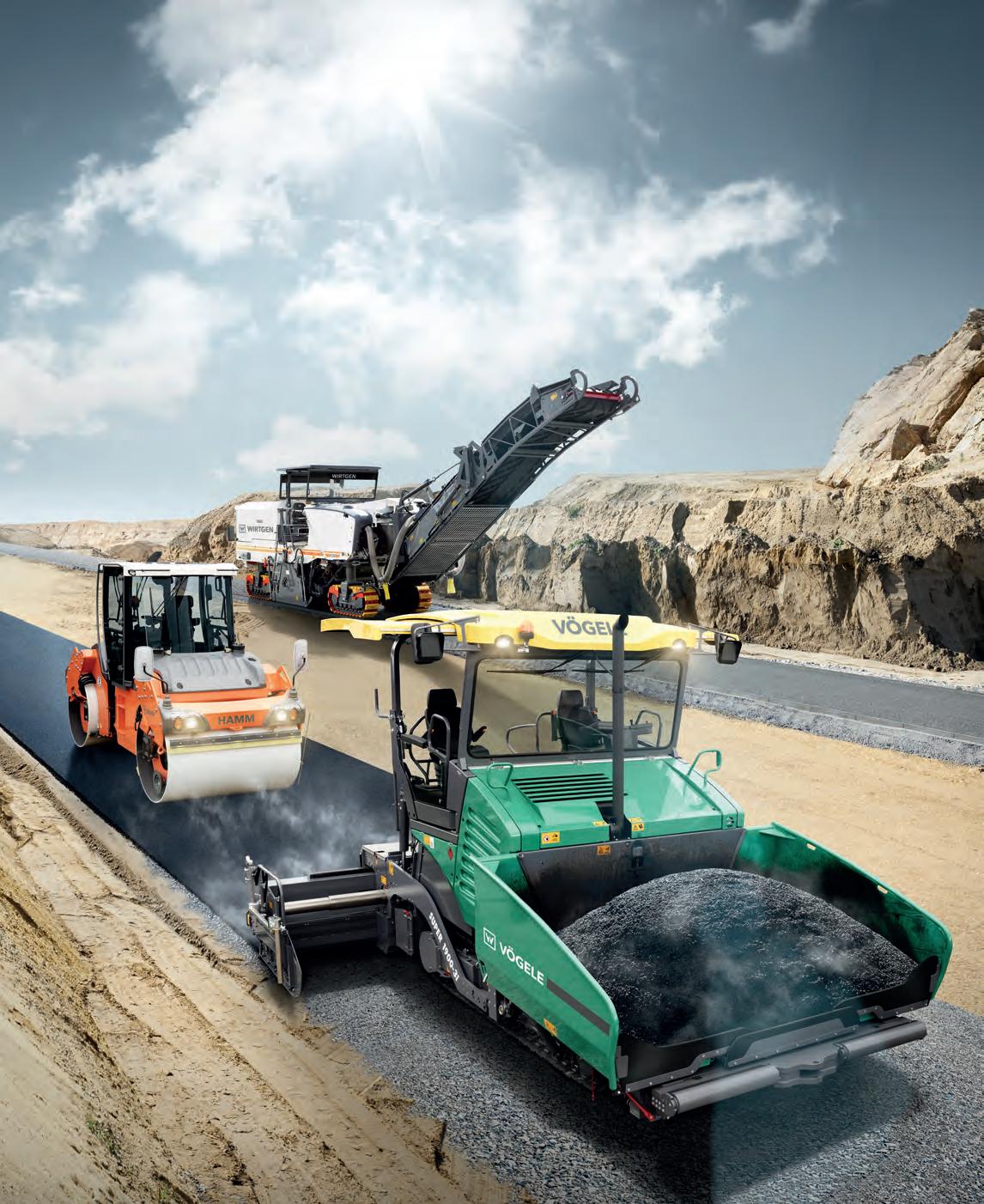






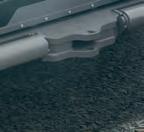






















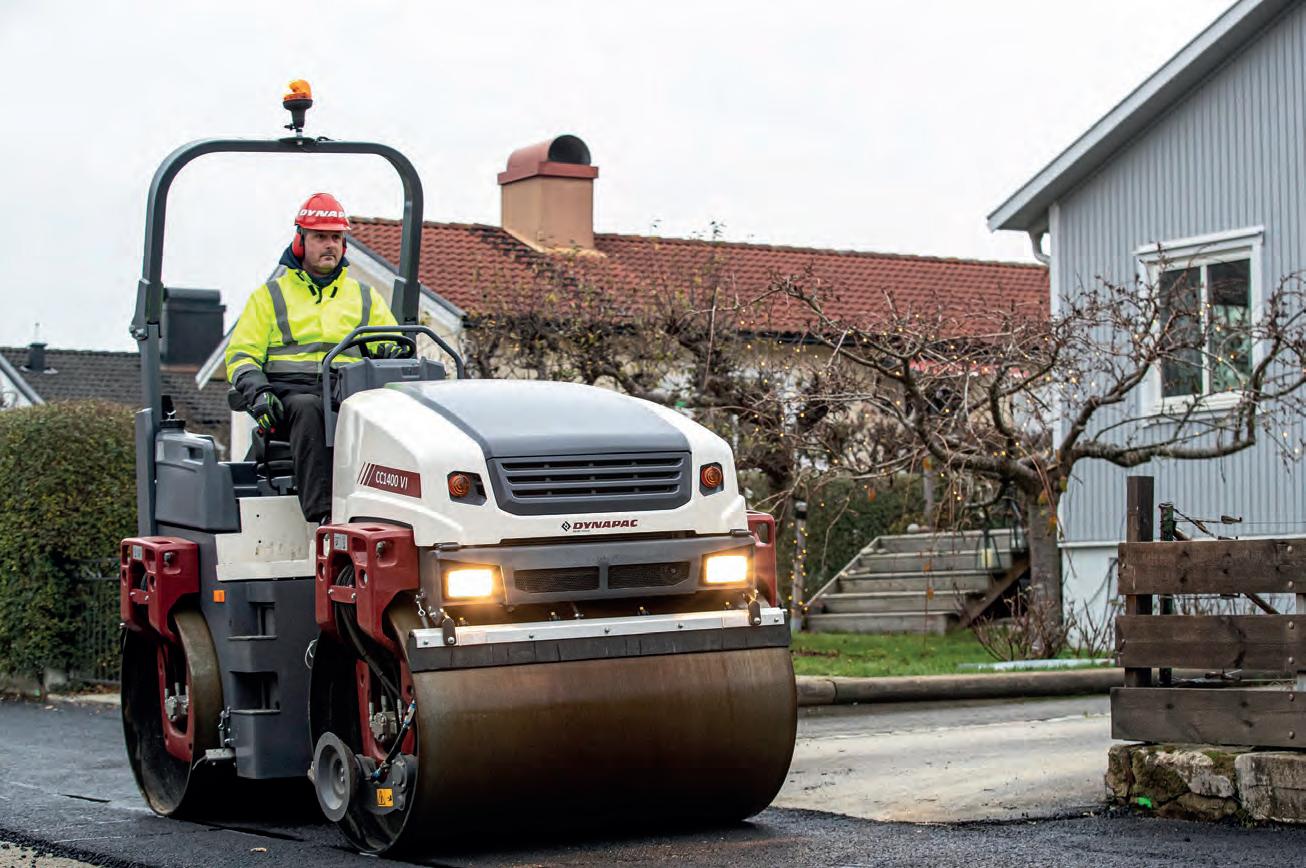
CLOSE TO OUR CUSTOMERS www.wirtgen-group.com/road Pole Position. ROAD TECHNOLOGIES. The WIRTGEN GROUP owes its strength in the Road Technologies business segment to the excellence of our product brands – WIRTGEN, VÖGELE and HAMM – with their unique wealth of experience. Take advantage of innovative technologies from the market leader. WIRTGEN AUSTRALIA Pty Ltd · Lot 2 Great Eastern Highway (Off Ivy St) · South Guildford WA 6055 T: +61 8 / 62 79 22 00 www.wirtgen-group.com/australia
COVER STORY
14 A pathway to the future
The next innovation in the sustainable binder space.
DIVERSITY
19 A diverse supply chain
Two companies are helping to remove typical barriers to employment.
ROADS REVIEW
22 How can construction companies encourage more diversity in the workplace?
TECHNOLOGY
25 An insightful outlook
An annual review of the sector’s shortcomings and achievements.
33 Technology update
A wrap up of the latest technological developments from across the sector.
COMPANY PROFILE
36 A fresh perspective
An overview of the recent changes to UAA’s senior leadership.
39 Young guns
Exciting plans are in development for a Victorian infrastructure provider.
42 Tonne up
Behind more than 100 years of bitumen emulsion.
MACHINERY AND EQUIPMENT
46 Being an employer of choice
What separates Komatsu’s approach to human relations.
49 Zero emissions take centre stage
A new zero-emissions load-handling solution.
51 New tech trims roadsides nationwide
A range of machinery for well-maintained roadsides.
EVENTS
53 Victorian Major Infrastructure Conference
54 No-Dig Down Under
55 2023 Ecologiq Conference
57 Inside Construction Expo
AFPA SECTION
58 Innovations and opportunities
A wrap up of AfPA recent 2023 the Industry Technical Panel Event.

NATIONAL PRECAST SECTION
61 Benefits for WA infrastructure
How pre-casters are contributing to the Bunbury Outer Ring Road project.
CONTRACTS & TENDERS
62 A summary of the contracts awarded for major infrastructure projects across Australia and New Zealand.
REGULARS
4 Editor’s note
6 News
AUGUST 2023 CONTENTS
In the August edition of Roads & Infrastructure Magazine, we’ll preview a variety of upcoming conferences and events.
BRIDGING THE GAP
FOR THE AUGUST EDITION, Roads & Infrastructure Magazine celebrates the work being done by inspirational figures across the sector to encourage and support greater diversity, in what remains a male-dominated industry.
In this month’s Roads Review column, we hear from some of the industry’s key decision makers on how construction companies can greater support the level of diversity across the sector.
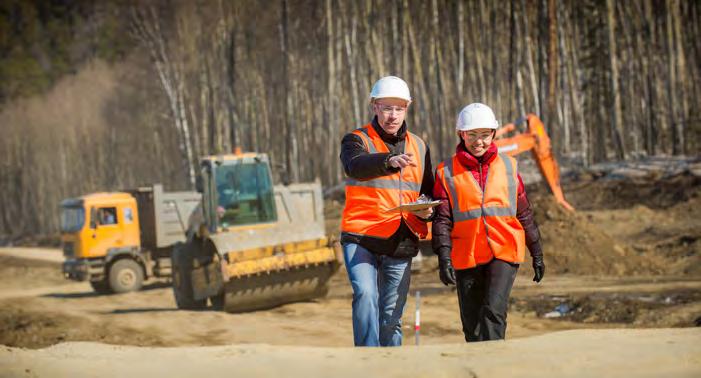
Some leaders say diversity training could help accelerate cultural change. This includes promoting flexible working arrangements, gender pay gap analyses, as well as sponsorship and mentoring programs. Others outline the importance of recruiting based on skills and qualifications, rather than demographics, to attract talent from more diverse talent pools.
Three Victorian companies, who have worked closely with Major Road Projects Victoria over the past few years, are demonstrating the use of their platform to provide unique employment opportunities for a diverse range of talent pools. One such example if LEV (Latrobe Valley Enterprises), which is giving people with disabilities the opportunity to contribute to not only major infrastructure projects, but also the local community.
For this month’s cover story, we speak with Puma Bitumen to learn more about the company’s use of biogenic materials to produce the latest development in asphalt binders. Described as a “carbon sink” by Erik Denneman, Global Technical Manager – Puma Bitumen, local research and development has pioneered a product for both Australian and international use.
We also provide previews of three upcoming conferences in 2023, with plenty of opportunities on show for both government and industry.
Happy reading!
Tom O’Keane Roads & Infrastructure Magazine
COO
Christine Clancy christine.clancy@primecreative.com.au
GROUP MANAGING EDITOR
Sarah Baker sarah.baker@primecreative.com.au
MANAGING EDITOR
Mike Wheeler mike.wheeler@primecreative.com.au
EDITOR
Tom O’Keane tom.okeane@primecreative.com.au
JOURNALIST
Chris Edwards chris.edwards@primecreative.com.au
DESIGN PRODUCTION MANAGER
Michelle Weston michelle.weston@primecreative.com.au
ART DIRECTOR
Blake Storey
DESIGN
Bea Barthelson
BUSINESS DEVELOPMENT MANAGER
Brad Marshall brad.marshall@primecreative.com.au
CLIENT SUCCESS MANAGER

Salma Kennedy salma.kennedy@primecreative.com.au
HEAD OFFICE
Prime Creative Pty Ltd
379 Docklands Drive, Docklands VIC 3008 Australia
p: +61 3 9690 8766 f: +61 3 9682 0044 enquiries@primecreative.com.au www.roadsonline.com.au
SUBSCRIPTIONS
+61 3 9690 8766 subscriptions@primecreative.com.au
Roads & Infrastructure Australia is available by subscription from the publisher. The rights of refusal are reserved by the publisher.
ARTICLES
All articles submitted for publication become the property of the publisher. The Editor reserves the right to adjust any article to conform with the magazine format.
COPYRIGHT
Roads & Infrastructure Australia is owned and published by Prime Creative Media. All material in Roads & Infrastructure Australia is copyright and no part may be reproduced or copied in any form or by any means (graphic, electronic or mechanical including information and retrieval systems) without the written permission of the publisher. The Editor welcomes contributions but reserves the right to accept or reject any material. While every effort has been made to ensure the accuracy of information, Prime Creative Media will not accept responsibility for errors or omissions or for any consequences arising from reliance on information published. The opinions expressed in Roads & Infrastructure Australia are not necessarily the opinions of, or endorsed by the publisher unless otherwise stated.
4 ROADS AUGUST 2023
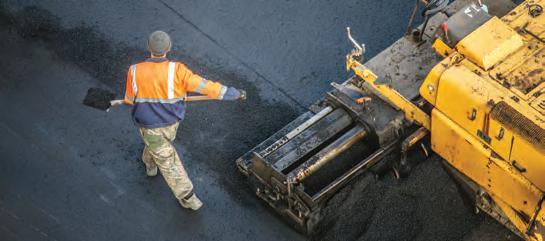
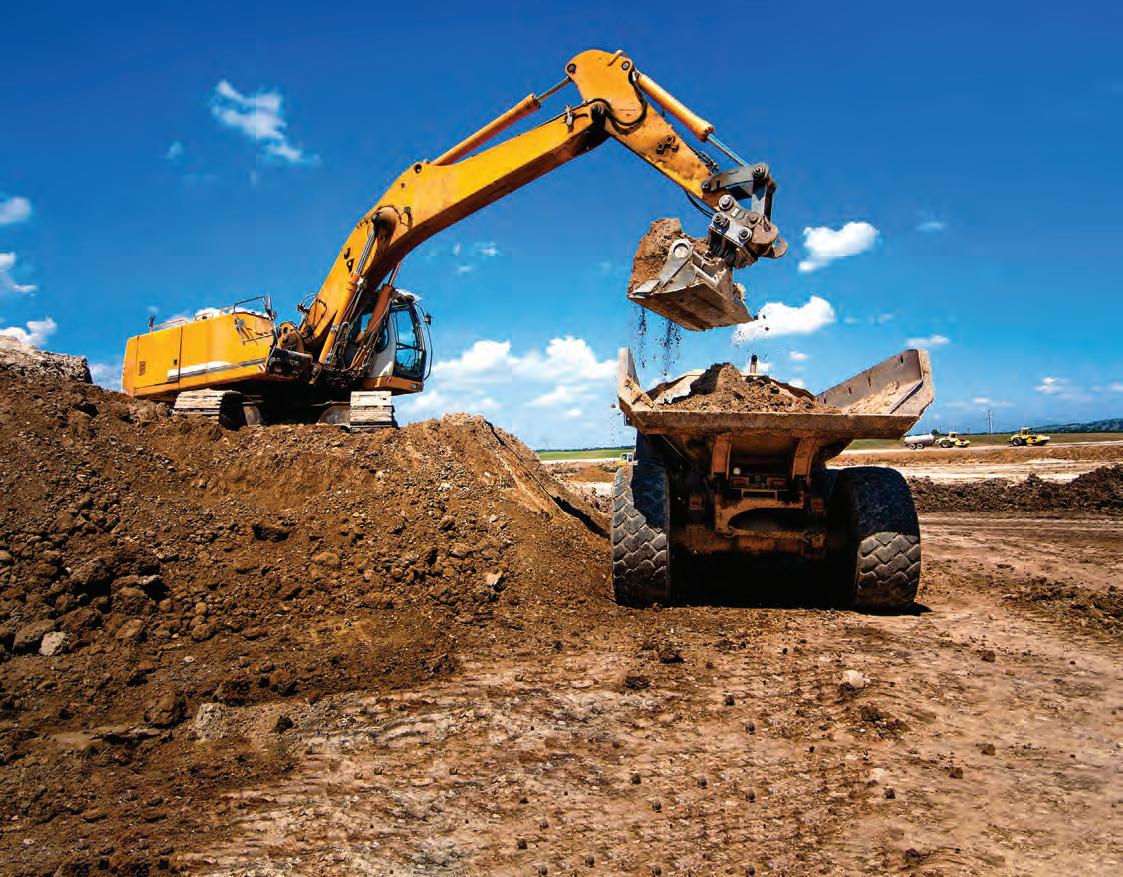
$32.1B
INVESTMENT ANNOUNCED FOR QLD ROAD AND TRANSPORT PROJECTS
The Queensland Government has announced a four-year, $32.1 billion investment program for new and on-going road and transport projects.
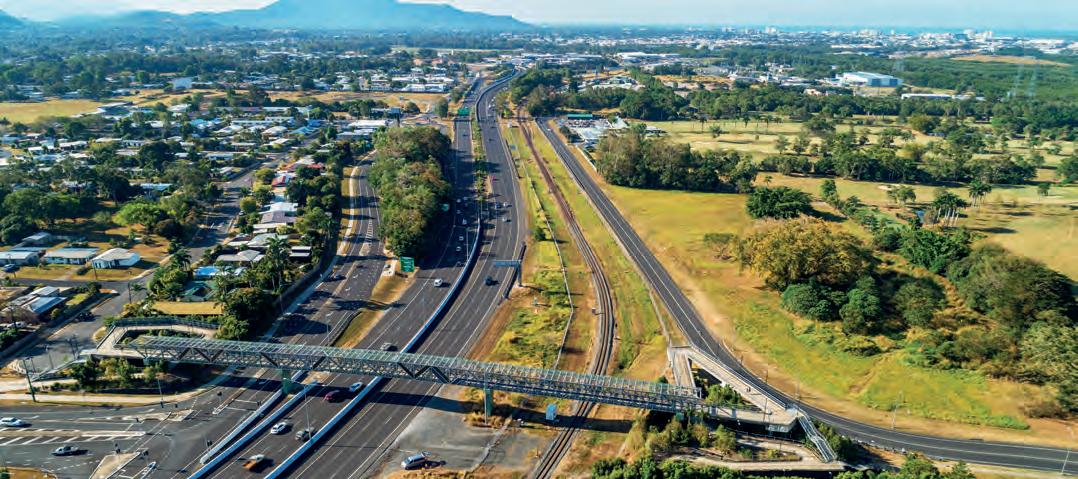
The Queensland Transport and Roads Investment Program encompasses a range of infrastructure investments including road, rail, marine, passenger transport, and active transport projects, which will all contribute to enhancing connectivity, improving safety, and supporting economic

growth across Queensland.
The program includes $1.815 billion for road safety initiatives, that complements other investment in behavioural change initiatives that aim to reduce lives lost and serious injuries on Queensland roads. This includes over $500 million for the Road Safety Program in partnership with the Federal Government.
Significant investments have also been allocated for rail, including $4.869
DOWNER COMPLETES SALE OF AUS PROJECTS BUSINESS
billion towards the Queensland Train Manufacturing Program. The program also includes allocations of $2.598 billion towards the Logan to Gold Coast Faster Rail project, and the $550.8 million Beerburrum to Nambour Rail Upgrade (Stage One).
The $1.219 billion Gold Coast Light Rail (Stage Three), Broadbeach South to Burleigh Heads is also continuing construction as part of the Queensland Transport and Roads Investment Program.
Downer has announced its completed the sale of its $212 million Australian Transport Projects business to DT Infrastructure Pty Ltd.
DT Infrastructure’s Australian Transport Projects business is responsible for delivering major construction services to mainly government, including design and construction of roads, rail, signalling, station works, bridges and more.

The sale will see Downer’s business, people and capabilities transferred, including around 1000 staff and a forecast work in hand of approximately $2 billion nationally.
Downer CEO Peter Tompkins said the sale was an important milestone in the company’s “portfolio simplification strategy”.
“Going forward in the transport sector, Downer will concentrate on enhancing its market leading positions in rollingstock, road maintenance and New Zealand infrastructure delivery,” Tompkins said.
6 ROADS AUGUST 2023
NEWS
The sale sees Downer’s Australian projects assets transferred to DT Infrastructure.
The infrastructure pipeline includes a considerable commitment to increasing efficiency and safety. Image courtesy of the New South Wales Government.


Call us today on 1300 074 249 komatsu.com.au Unleash the power of precision and efficiency with the Komatsu PC138US-11 Excavator with 3D machine guidance and payload *Terms and conditions apply visit: https://komatsuweb.link/rfk-pc138us-11. Image is for illustration purposes only. *Applies to Komatsu PC138US_11 range only. Scan to learn more For a limited time, offer includes: � Factory Fit Retrofit Kit (RFK) � 3 Year Smart Construction Support Subscription giving you expert guidance and support � 3 Year Access to Smart Construction Pilot for advanced project management � Komplimentary Maintenance � 4-year/8000-hour premium warranty Our comprehensive package is designed to empower your team with cutting-edge features and in-house support.
CONSTRUCTION UNDERWAY ON FIRST ROAD UPGRADE OF $850M PACKAGE

Works are underway on the first intersection and road upgrade works being delivered as part of the River Torrens to Darlington Project in South Australia.

The construction of the first intersection and road upgrade consists of works to Selgar Avenue link road. Once complete, the upgrade will provide new entry points into the area of Tonsley. These works are being completed by Bardavcol and are expected to wrap up by December 2023
The upgrade aims to reduce travel times, create a route for commercial freight and provide greater connections. This package will also construct the remaining 10.5
The NSC will create 78 kilometres of nonstop, traffic light-free motorway between Gawler and Old Noarlunga in Adelaide’s south. The T2D Project is expected to support 5500 jobs annually during construction.
TUNNELLING BEGINS ON WESTERN SYDNEY AIRPORT
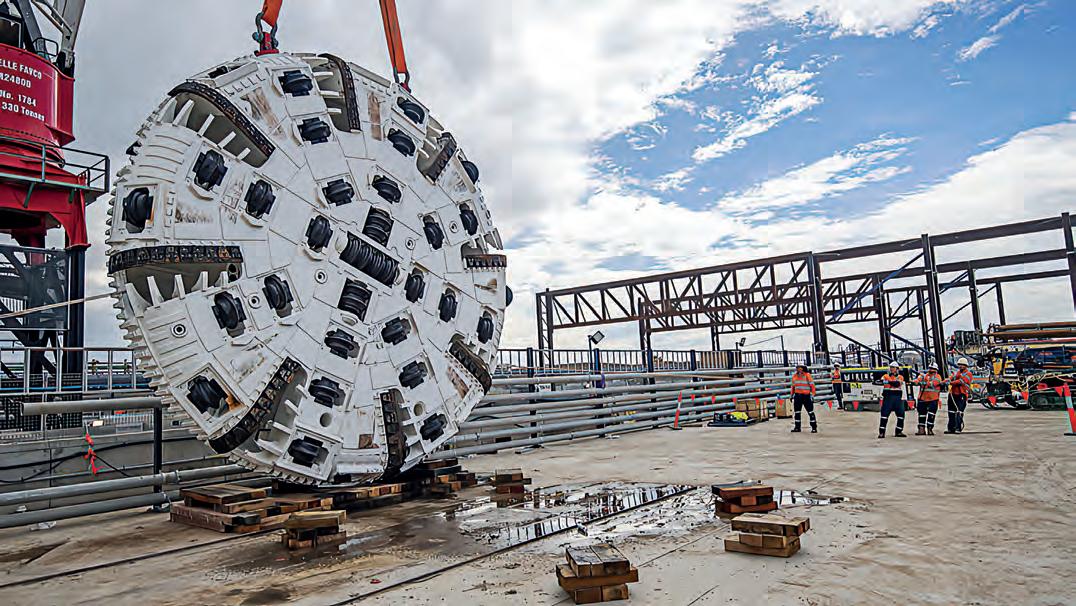
TBMs moving through the first 5.5-kilometre sections of the twin metro tunnels.
The 23-kilometre new railway will link residential areas with job hubs including the new Aerotropolis and connect travellers from the new airport to the rest of Sydney’s public transport system.
The line will be operational when Western Sydney International Airport
opens for passenger services, with an expected travel time of 15 minutes from St Marys metro station to Airport Terminal Station and a further five minutes to the Aerotropolis Station.
The tunnelling contract was awarded in December 2021 to CPB Contractors and Ghella Joint Venture to build the new twin metro rail tunnels.
The TBMs will excavate around 120 metres of tunnels per week, the first step in delivering the six new metro stations along
the line from St Marys to the centre of the new Aerotropolis.
The two 1066-tonne TBMs Eileen and Peggy are named after two historic figures for the region. TBM Eileen pays tribute to the first female Mayor of Penrith, Eileen Cammack OBE, who also established the first pathology laboratory at Nepean District Hospital. TBM Peggy honours pioneer aviator Peggy Kelman OBE, who was instrumental in promoting female aviation and was a flying companion of Nancy-Bird Walton.
8 ROADS AUGUST 2023
NEWS
The upgrade forms part of a $850 million package for the River Torrens to Darlington Project (T2D).
kilometre section of the state’s North-South Corridor (NSC).
Two 1066-tonne tunnel boring machines have begun their journey on the new 23 kilometre line. Image courtesy of the New South Wales Government.
Artists impression of the T2D Motorway (Richmond Road). Image courtesy of the South Australian Government.
LEVEL UP

NEVER IDLE

In this game, there’s no substitute for experience. But finding expert Motor Grader operators can be tougher than the terrain they’ll be tackling. That’s why John Deere is the only player in Australia to be offering Motor Grader automation upgrades to all machines from 2019 onwards. Spec’d out with the latest tech including Machine-Damage Avoidance, Auto-Articulation, Auto-Pass, Auto-Shift Plus, and Blade Stow, less experienced operators can get to grips with the machine double quick, and takes the pressure off your more experienced hands. Take your operation to a whole new level. Check your serial number with your local dealer, today.
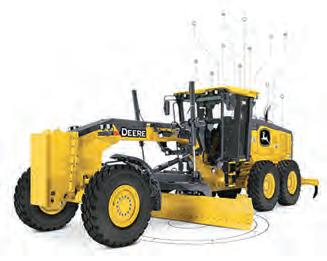

DEERE.COM.AU/SMARTGRADEMOTORGRADERS SCAN TO LEARN MORE
MOTOR GRADER JOB SITE AUTOMATION
Next




Extract


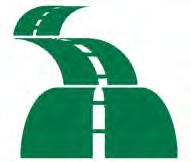



Puma Energy Bitumen bitumen.au@pumaenergy.com pumaenergy.com/en/web/bitumen/
biogenic components Roads become perpetual CO2 vaults Integrated with our global supply network
capture atmospheric CO2 Puma CarbonBind
Trees
generation,
road binders Your journey to net zero starts on a road paved with Puma CarbonBind
carbon sinking
PREPARATIONS CONTINUING ON $983 MILLION FITZROY TO GLADSTONE PIPELINE
The first pipes have arrived on site for the Fitzroy to Gladstone Pipeline in Queensland, as preparations continue ahead of the start of construction.

The project is a new 115-kilometre pipeline that will support the transfer of
30,000 megalitres of water annually, from the Fitzroy River to Gladstone.
A joint venture between McConnell Dowell and BMD has been appointed as the construction contractor. The proponent Gladstone Area Water
Board will own and manage the pipeline following construction. The pipes on the project are being manufactured by Steel Mains.
The project is expected to be completed in late 2026.
Construction is now underway on the second grid-scale battery storage system in Western Australia.
The $625 million Kwinana Battery Stage Two project will deliver 200 megawatts of energy capacity with 800 megawatt hours of energy storage – four times that of Kwinana Battery Stage One.
The project will play a key role in closing coal-fired power stations, as part of the Western Australian Government’s 2030 emissions reduction targets.


Construction on the second big battery will include 288 shipping containersized battery modules and will feature 72 inverter units. These inverters use new-generation technology to support
grid stability by storing electricity when demand is lowest and delivering it back into the grid during peak times.
Construction of the big battery is situated close to the old Kwinana Power Station site, adjacent to the first gridscale battery.
The second big battery is expected to open by late 2024.
roadsonline.com.au 11
NEWS
The project will deliver a new 115-kilometre pipeline. Image courtesy of McConnell Dowell.
The ‘big battery’ is one of the largest in Australia. Image courtesy of Kwinana Industries Council.
WORKS PROGRESSING ON VIC’S LONGEST ROAD TUNNELS
Construction on the North East Link tunnels in Victoria is powering ahead, with works underway for on and off ramps at a new interchange.

The North East Link signifies the largest ever investment in Melbourne’s northeast and once complete will remove 15,000 trucks from local traffic and reduce travel times by up to 35 minutes.
The new interchange at Manningham will help to divert 14,700 vehicles off Bulleen Road daily, with this traffic to instead travel through the new 6.5 kilometre road tunnels.
Works on this section are focused on building structural walls to allow for the excavation of the ramps, as well as the tunnel boring machine retrieval box.
The tunnel boring machines for these works are expected to arrive in late 2023. The machines will be assembled before major tunnelling works begin next year.
Development has started on surrounding infrastructure, including the TBM launch area which will consist of two large storage sheds.
Additional works are also underway to move Bulleen Road further west, to make space to build the new Yarra Link green bridge over Bulleen Road, linking Koonung Creek Trail to Bulleen Park.
SA GOV TO INTRODUCE $98M ROAD SAFETY PROGRAM
The South Australian State Government has announced plans to invest $98 million in a new road safety program to address the state’s high road death toll.
Under the $98 million program, half of the funding will be allocated to improve the safety of road infrastructure.
This includes $40 million for connections surrounding the Mount Barker roundabout in Adelaide. The scope of works for this project involves upgrading the intersection to increase capacity from all roads, provision of shared use paths, stormwater drainage improvements and installation of streetlights. These works are expected to be completed by June 2026.
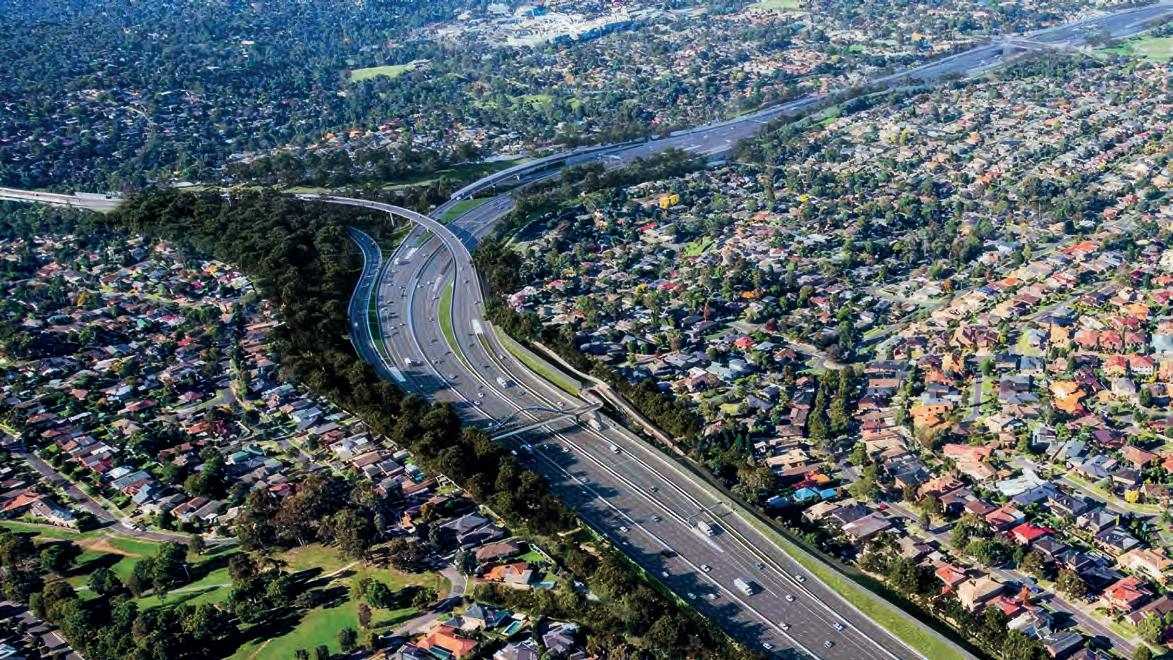
The $98 million funding package includes $17.8 million for approximately 15 new mobile speed cameras and the replacement of an anticipated 16 fixed

speed and red light cameras with newer technology. A further $13.4 million will be spent on an anticipated 10 additional mobile phone detection cameras to deter dangerous behaviour.
591 people have died on South Australian roads so far this year, 17 higher than the five year average.
31 per cent of lives lost have been attributed to excessive speed and 27 per cent attributed to dangerous driving so far this year. The State Government says Mobile speed cameras will assist in enforcing speed limits in regional areas, where as of 14 June 2023, the majority of fatal crashes occur—including 60 per cent of all lives lost this year.
The cameras are expected to be operational in 2024. The initiative is projected to increase expiation revenue
by $17.1 million per annum (indexed) from 2024/25.
A further $10 million will be spent over four years on rural road targeted initiatives including audio tactile line marking, safety barriers and rural junction activated warning system signage.
12 ROADS AUGUST 2023
NEWS
The safety improvements include upgrades to both equipment and infrastructure.
The North East Link project will be complete in 2028. Image courtesy of the Victorian Government.
Introducing the first and only skid steer with a telescopic boom the JCB Teleskid; a truly unique, versatile skid steer with endless possibilities. Now you can lift higher, reach further, dig deeper.
This revolutionary product is designed to suit all types of job sites meeting the need of multiple machines wrapped nicely into one. Combining the strength and safety of our single side boom with side door entry and extendable boom JCB has increased the versatility of the SSL-CTL world.
To find out more contact your local JCB CEA dealer today. Ph: 1300 522 232 www.jcbcea.com.au



A PATHWAY TO F
THE FUTURE
PUMA BITUMEN IS IMPLEMENTING BIOGENIC MATERIALS TO FURTHER INCREASE THE SUSTAINABILITY OF ITS ENVIRONMENTALLY FRIENDLY SOLUTIONS. PUMA AND CUSTOMER BORAL EXPLAIN HOW THIS AUSTRALIAN-FIRST PRODUCT COULD HELP TO ACCELERATE CHANGE ACROSS THE INDUSTRY.
or years, Puma Bitumen has been heavily involved in the research and development of bitumen solutions across the globe. This has led to the procurement of products that are now considered standard across the roads and infrastructure sectors.
The company continues to innovate, with an even greater focus on sustainable sourcing and supply. This expertise is what led to the development of Puma bitumen’s newest sustainable binder.
Erik Denneman, Global Technical Manager – Puma Bitumen, says CARBONBIND bituminous binders contain biogenic materials (plant grown components), some grades can also
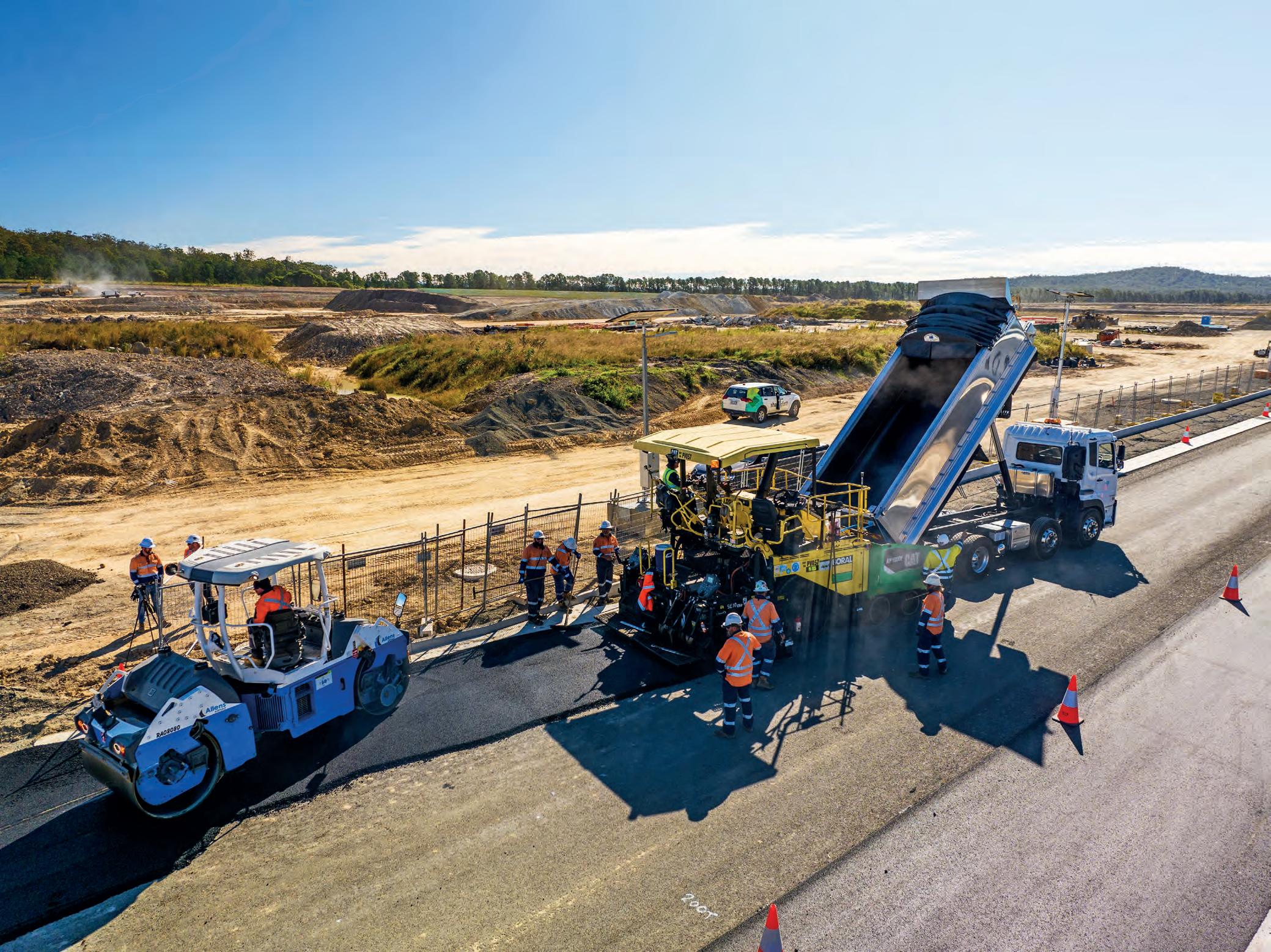
14 ROADS AUGUST 2023
include waste tyre-derived rubber.
“Three years ago, we decided that all our future research and development had to be focused on ‘what do our binders look like in 2030? What do they look like in 2050? And how do we get on the path towards net zero emissions?’
“With CARBONBIND I’m very excited because it’s the first time that we, as an industry, can see a clear path to get [to net zero],” he says.
Puma Bitumen’s CARBONBIND is the first bio-based asphalt and sprayed seal binder in Australia.

The product has been specifically designed to reduce the overall carbon footprint of bitumen, as well as asphalt products that
contain it. So much so, that Denneman refers to CARBONBIND as a “carbon sink”.
Incorporating biogenic materials means carbon can be captured and stored in road pavements. This is achieved by extracting biogenic materials from plants that capture carbon dioxide. These materials are also sustainably and ethically sourced.
“Only about 15 per cent biogenic material is required to make bitumen carbon neutral and about 25 per cent for polymer modified binder,” Denneman says. “This is already technically feasible, and the industry can follow the path opened by CARBONBIND to develop and demonstrate next generation technology that makes net zero a commercial reality.”
Products such as CARBONBIND, combined with Puma Bitumen’s sustainable processes, help to minimise carbon emissions throughout the entire supply chain.
“CARBONBIND is an economically viable and meaningful solution to reduce the carbon footprint of flexible pavements, while maintaining equivalent or better longterm performance,” Denneman says.
DEVELOPING INNOVATION
Development of CARBONBIND was completed in Puma Bitumen’s research and development facility in Melbourne, the Puma Global Bitumen Technology Centre. This facility has supported the development of several products under Puma Bitumen’s sustainable binder range. Denneman says Puma Bitumen is proud to have introduced an Australian-first product that was also developed locally.
“The majority of my career has been focused on taking technology from overseas and implementing it in Australia,” he says. “But here we’re doing this in reverse. It’s fantastic to be in that space where we can share some of the great work that we’re doing with the rest of the world.
“WHEN IT COMES TO RESEARCH AND DEVELOPMENT IN THE BIOGENIC MATERIALS SPACE, WE HAVE IDENTIFIED THIS AS PROBABLY THE MOST EXCITING BRIDGE BETWEEN LEGACY TECHNOLOGY AND THE LOW CARBON, HIGH PERFORMING BINDERS OF THE FUTURE.
“It’s changing the narrative.”
Domestic development has also let to a range of CARBONBIND asphalt and sprayed seal grades satisfying Austroads PMB specifications. These requirements outline standards associated with materials used in sprayed sealing and asphalt applications.
Satisfying these requirements also means that contractors don’t need to make changes to their equipment, processes or designs before using the product.
“Our customers in Australia have been very supportive,” Denneman says. “Customers are willing to invest and understand that this is a journey. If no one is going to support that first step, no company is going to truly invest in a great idea.
roadsonline.com.au 15 COVER STORY
This application of Puma Bitumen’s CARBONBIND contained both biogenic and recycled materials.
“It’s important to understand that this technology isn’t just something that you switch on by 2050. If you want to be net zero, you must have a pathway to get there.”
Phil Chirnside, General Manager for Australia – Puma Bitumen says the company has put significant focus on its research and development into creating a product for the future.
“When it comes to research and development in the biogenic materials space, we have identified this as probably the most exciting bridge between legacy technology and the low carbon, high performing binders of the future. The time and effort we dedicate to this research reflects our belief in its future value to our industry,” Chirnside says.
“For Puma, this encompasses not only safeguarding our position as a preferred supplier of high-quality bitumen well into the future, but doing so to the highest degree of corporate social responsibility with current and future generations in mind.
“These ambitions extend to supporting our customers to achieve their sustainability goals. We believe CARBONBIND is our most exciting development to date, which plays a truly meaningful role in delivering on these objectives.”
EYE-TO-EYE
One company that has been a keen supporter of CARBONBIND is Boral, the largest vertically integrated construction materials provider in Australia.
Just like Puma Bitumen, Boral’s operations are engrained in sustainability. Both companies share ambitious net zero targets and are committed to reducing their carbon footprint wherever possible.
Which is why CARBONBIND’s potential sustainability benefits attracted Boral.
Rob McGuire, National Sales Manager, Asphalt – Boral says the relationship between Boral and Puma has been decades in the making.
“Puma is a key supplier of bitumen to Boral,” he says. “They come with international experience and a global perspective, given their coverage across the world.
“There’s a long history and a deep technical connection. We’ve been key partners for just about as long as Boral’s been in existence.”
Carl Topp, National Technical Manager, Asphalt – Boral says both companies share a similar philosophy, particularly when it comes to quality and sustainability.


“We align very well in terms of our desire to provide not only an innovative product, but also a high quality one,” Topp says.
“We take a lot of pride in the quality of our work, as well as the products that we supply. We also work very closely with their technical team. There are some striking similarities in terms of collaborating to reach a high-quality outcome.”
Chirnside says the strength of the partnership lies in a commitment to serve the industry.
“Boral has been a loyal user of Puma’s binders since we entered the Australian market. They have a strong pedigree and reputation as an organisation that fulfils its craft to the highest standards. Their passion and commitment to innovation, ongoing improvement, and sustainability mirrors that of Puma,” Chirnside says.
McGuire agrees.
“We’ve got a shared vision around collective improvement to both our businesses,” he says. “We’ve got a balanced approach, from technical, health and safety, environmental sustainability, and some innovation along the way.
“That’s why we’ve got such a mutual respect for each other and are aiming for the same outcomes.”
“THERE’S A LOT MORE OPTIONS NOWADAYS TO BRING THESE PRODUCTS TO THE FORE AND HAVE THEM GREEN LIT FOR ROAD USE. PREVIOUSLY THIS WASN’T AS EASY, IT’S CHANGING THE CULTURAL APPROACH TO WHAT WE’RE DOING.”
16 ROADS AUGUST 2023
Dr Erik Denneman believes CARBONBIND will open new doors towards fully sustainable options for the industry.
This is what drove Boral’s initial interest in the CARBONBIND
THE FIRST USE
Boral engaged Puma towards the end of its development cycle of CARBONBIND, inquiring about the potential use of the product.
For Boral one of the standout qualities of the product, on top of its sustainability benefits, was that it had been developed locally. As McGuire explains.
“There’s a lot more options nowadays to bring these products to the fore and have them green lit for road use. Previously this wasn’t as easy, it’s changing the cultural approach to what we’re doing,” he says.
Topp says the CARBONBIND marks the first time that Boral has used a product that combines both recycled components and bio-genic materials. He says that such a product is clearing a pathway for use and development of materials that wasn’t previously possible.
“A lot of that now is a change to approach, there’s more confidence in the people who are developing these products and putting in
the time and effort,” Topp says. “[Puma] are delivering this successfully.”
Topp adds that another standout feature of the CARBONBIND is its ability to be implemented into existing processes and requirements.
“It’s been very well developed by Puma with a mindset of having a product that could fit into current specifications,” he says.
“That’s certainly a big thing, it’s probably viewed as lower risk for stakeholders. Really the biggest benefit is the assistance it gives in terms of sustainability and carbon reduction.”
Boral and their subsidiary company Allen’s Asphalt have utilised CARBONBIND on five sites across Southeast Queensland to date for their main customers. When it comes to performance, Topp says the product performs at least equivalent to conventional materials and products.


“It’s the same but different. It’s a different product, but I think that’s what the beauty of it is. It behaves and is delivered very consistently to that of a conventional treatment,” Topp says.
“There’s nothing significant that we have to change in terms of process or application.
That’s a big tick for us.”
Topp says these works have received positive feedback from clients, as well as the crews using CARBONBIND.
“There can sometimes be a perception around new products, but there’s been no concerns,” he says. “It’s all been positive feedback so far. Everything operationally has been great, and our customers have been very supportive of the reasons why we’re using the product.”
McGuire says he can tell Puma considered a variety of factors when developing CARBONBIND.
“We haven’t had any issues with fuming or smells and those kinds of intangibles,” he says. “Credit to Puma, they’re very much aware and conscious of considerations for a product like this.”
Boral is conducting performance-based testing in field installations for the product. Topp says early indications point towards CARBONBIND potentially becoming a standard application for industry.
“Longer term, I can see this product being the standard selection for all projects where PMB’s are specified. It ticks several boxes,” he says. “The future’s very bright.”
roadsonline.com.au 17 COVER STORY
PMB (Polymer Modified Bitumen) product.
Boral has become a keen supporter of CARBONBIND and other sustainable options.
REALIZE PROJECT CONFIDENCE

TRANSFORMING THE WAY THE WORLD BUILDS

So ware that helps you
Learn more at InEight.com
So ware for Capital Projects
A DIVERSE SUPPLY CHAIN
Anumber of businesses who work with Major Road Projects Victoria (MRPV) are driven by an ethos of providing employment opportunities to communities that would otherwise face significant obstacles in the labour market.
This forms part of MRPV’s vision of a strong, sustainable and diverse infrastructure sector.
Key to achieving these milestones is supporting businesses that are contributing to the betterment of the industry, particularly when it comes to removing barriers to meaningful employment.
LaTrobe Valley Enterprises (LVE) is one such company. Suzanne Lewis, CEO – Latrobe Valley Enterprises says LVE works to remove barriers to employment.
“We provide meaningful and sustainable employment to people living with disabilities,” Lewis says.
“We have approximately 100 people with a
number of those people living with various disabilities, whether they be intellectually or physically disabled.”
Around 85 per cent of LVE’s entire workforce has disabilities. General Manager Operations Mark MacManus says the company’s ethos has remained intact since its inception, with a focus on grasping opportunities and growth.
“We’ve been going for close to 57 years now and since we started the goal was to provide opportunities. As the business has grown and we’ve started to work in a lot of different areas,” he says.
“This growth has meant that we’ve needed to make sure that our business can continue to grow and offer more people opportunities. That’s a big part of our work, we make sure that it’s sustainable so we can continue to do this into the future.”
LVE offers a variety of services for projects
of all sizes, such as sign making, recycling, business support services and grounds & facilities maintenance.
LVE’s variety and quality of services has led to the company winning several contracts for works on infrastructure projects with Major Road Projects Victoria.

This includes works on Princes Highway East, the third and final stage of the upgrade is delivering 43 kilometres of duplicated highway between Traralgon and Sale in the state’s east.
LVE has also delivered signage works for projects that form part of the Regional Rail Revival program.
“We’ve had a great relationship,” says Lewis on the affiliation between MRPV and LVE. “MRPV has been on that whole journey of social enterprise. There’s a lot of organisations that might speak about social enterprise, or about people living with disabilities, but they don’t truly live it.”
roadsonline.com.au 19 DIVERSITY
A NUMBER OF VICTORIAN COMPANIES ARE PROVIDING LIFE-CHANGING OPPORTUNITIES FOR LOCAL EMPLOYMENT, AS PART OF THEIR WORKS ON MAJOR TRANSPORT INFRASTRUCTURE PROJECTS ACROSS THE STATE.
Works are continuing on the Epping Road Upgrade.
ALL IN
Another company that’s opening doors for employment is NLA Logistics.
NLA Logistics is the only 100 per cent Aboriginal Female Owned plant hire business in Victoria, catering for the plant hire needs for major infrastructure works.


With works on projects such as the Monash Freeway Upgrade, Hall Road Upgrade, Glen Huntly Level Crossing Removal Project and Epping Road Upgrade, NLA has grown rapidly since its foundation seven years ago.


Director Nicole. A says NLA has grown its fleet to more than 150 contractors, with more than 15 units of its own.
In the beginning, she owned and operated the one truck business, before expanding the company’s capabilities for works across Melbourne.
“We try and engage as many members of the Aboriginal community as we can,” she says. “We try and engage contractors to help them to get work. It doesn’t have to be for us, it doesn’t have to benefit us. It’s just to help them.”
NLA contains a diverse workforce, with many contractors from a variety of backgrounds, as Nicole. A explains.
“A lot of our [staff] are refugees, asylum seekers, former defence personnel and more,” she says.
She adds that this generosity and commitment to providing opportunities stemmed from her own personal experiences during the early days of NLA.
“I didn’t have that support from anybody
with my business. It’s not easy, so if we can help someone when we can, we try to,” she says.
“A lot of the contractors come to me and say that if it wasn’t for NLA they wouldn’t be in the industry, or they would be in a poor financial situation. They’re very thankful.”
She’s also recognised higher quality outcomes during projects, thanks in part to the commitment and thankfulness of NLA’s contractors.
“I think it’s very rewarding. I find that they actually care about what they’re doing, they care about their own business, and they care about NLA. It makes them happy to
come to work and this shows in their work ethic,” she says.
This has been prevalent on the company’s recent works on the Hall Road, Carrum Downs Upgrade. Beginning early last year, NLA was tasked with a variety of cartage responsibilities on the works, including the transportation of quarry products and exporting clean fill.
These works will wrap up in 2024, but the impact of providing employment and industry opportunities will last a lifetime, she says.
“Some other plant hire businesses treat contractors like a number. But I like to find out what our contractors need and if we can help them,” she says. “That’s how I choose to run the business.”
20 ROADS AUGUST 2023 C M Y CM MY CY CMY K
NLA, Victoria’s only 100 per cent Aboriginal female-owned plant hire business, is currently contributing to the Hall Road Upgrade.
Construction works on the Princes Highway East project.




WORK ANYWHERE. BUILD EVERYWHERE. Learn more at bluebeam.com.au Try Revu 21 and Bluebeam Cloud today. @ 2023 Bluebeam, Inc. Bluebeam and Revu are trademarks of Bluebeam, Inc. registered in US and other countries.
ROADS REVIEW


THIS MONTH, WE ASKED THE INDUSTRY’S DECISION-MAKERS, ‘HOW CAN CONSTRUCTION COMPANIES ENCOURAGE MORE DIVERSITY IN THE WORKPLACE?’
CAROLINE WILKIE, CEO – AUSTRALASIAN RAILWAY ASSOCIATION


Having a diversity and inclusion focus is important in supporting the long-term sustainability of the rail industry, particularly with a 70,000 skills gap in the face of an unprecedented $154 billion pipeline of infrastructure projects over the next 15 years. The ARA urges all organisations in the industry to champion greater diversity and inclusion by making their workplaces welcoming and safe to all. This could include diversity training to address cultural challenges, providing flexible workplace practices, undertaking gender pay gap analysis, mentoring and sponsorship programs, as well as developing and implementing inclusive workplace policies and practices. The ARA’s Women in Rail strategy supports businesses to build gender diversity. Attracting females into rail apprenticeships or rail training and attracting skilled or qualified female candidates are key challenges and promoting more women will be a crucial part of growing our workforce.

KATRIINA TÄHKÄ, CEO – A HUMAN AGENCY (A-HA!)/ AFPA D&I COMMITTEE MEMBER
People want to work in an environment where they feel valued, respected and heard. When you ask groups of people why they don’t work in a particular company or industry it’s usually because they don’t feel welcome or like they ‘fit in’. Construction companies that consciously build a workplace culture which is inclusive of all people; and actively identify and overcomes any barriers to participation, will reap the rewards in terms of seeing a more diverse workforce wanting to work there. Not sure what your current culture is like? A culture audit will make your action plan clear.
JAY KATTEL, GROUP MANAGER, WORKFORCE DEVELOPMENT AND DIVERSITY –COATES


Coates supports greater diversity in the construction sector through policies and plans that explicitly promote equal opportunities and representation. Implementing clear diversity and inclusion measures also helps progress workplace diversity, as does driving ownership and sponsorship from senior and middle management and the provision of company-wide inclusion training. Recruitment processes that focus on skills and qualifications rather than demographic factors and creating targeted partnerships with community organisations and underrepresented groups, is also an excellent way of identifying more diverse talent pools. Ultimately, creating a supportive and inclusive work culture that values different perspectives fosters and retains a diverse workforce.
If you or someone at your organisation is an industry leader and would like to be a part of this monthly column in 2023, please get in touch with Editor, Tom O’Keane: tom.okeane@primecreative.com.au
ROADS REVIEW
22 ROADS AUGUST 2023




1300 278 322 enquiries.australia@astecindustries.com astecindustries.com BUILT TO CONNECT
REVEAL
ARE AUSTRALASIA’S INNOVATIVE SUBSURFACE EXPERTS.
With Reveal, you can eliminate subsurface risks, deliver infrastructure projects faster and minimise cost blow-outs and variations.
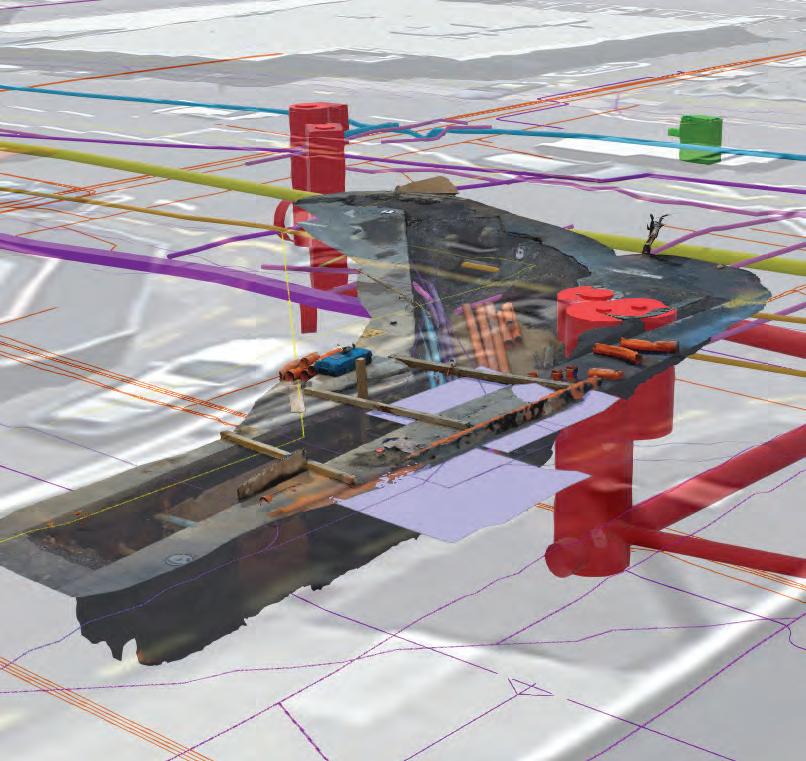
If you need to understand your underground, get in touch with the world’s leading subsurface experts.

WWW.REVEAL.NZ
AN INSIGHTFUL OUTLOOK
INEIGHT’S 2023 GLOBAL CAPITAL PROJECTS OUTLOOK MARKS THE THIRD
Despite on-going pressures, the roads and infrastructure sectors continue to push on.
The confidence and resilience of the sector is supported by a $17.9 billion commitment to major infrastructure projects over the next 10 years, as part of the 2022-23 Federal Budget.
According to the Federal Government, total investment in major infrastructure is expected to reach more than $218 billion. As such, gauging potential areas of growth and improvement will be essential in ensuring that the sector can successfully deliver this pipeline. It’s a key reason for the development of InEight’s Global Capital Projects Outlook.
The outlook is now an annual survey; a study of digital transformation across the sector, as well as a source of insights on important issues such as sustainability, innovation and more.
Now in its third year, it provides valuable insights on trends and behaviours that are likely to shape the industry in its near- and long-term future.
The survey has often communicated the industry’s uncertainty due to lingering effects of the COVID-19 pandemic such as impacts on global supply chains, high demand for skilled personnel and price escalation for both products and services.
Despite these factors still having an impact on project delivery and development, Rob Bryant, Executive Vice President, Asia-Pacific & Japan for InEight, says the 2023 Outlook paints a positive picture for the sector’s future.
“Last year, I think, there was a bit of a pause and a restart off the back of COVID-19,” Bryant says. “There’s still a lot of contractors that are facing challenges around familiar issues of labour and material costs.”
The Global Capital Projects Outlook survey includes 26 questions.
InEight received 300 responses from a variety of industries including manufacturing, construction, mining, utilities and more.
Of the 300 respondents, 100 each were drawn from the regions of Asia-Pacific (APAC), Europe, and North America. Sixty-seven per cent of these were project owners, with the
remaining 33 per cent being contractors.
OPPORTUNITIES FOR GROWTH
A common theme, since the first Global Capital Projects Outlook in 2021, has been the sector’s positivity towards growth and new opportunities.
According to the survey, 41 per cent of project owners are very optimistic for the future, while 51 per cent are fairly optimistic. Similarly for contractors, 41 per cent say they’re very optimistic, with 58 per cent saying they’re fairly optimistic towards their organisation’s prospects for further growth over the next year.

One of the core themes addressed in this year’s Global Capital Projects Outlook is the depth of new opportunities provided by technology.
“There seems to be a lot of recognition by those in the APAC region that they can be doing a better job of optimising their use of technologies. Whether it be for managing their materials, tracking labour on site, or how they can improve productivity in general,” Bryant says.
This could be attributed to the lack of financial resources available for companies to adopt these new technologies, due to ongoing economic stresses.
Despite this, Bryant says Australia’s
enthusiasm towards adopting new technologies remains strong, particularly when compared to the rest of the world.
“We’ve seen Australia and the APAC region be a leader and perhaps even more progressive than some other areas of the world. That’s a strong sign that we’re seeing this as a continued trend.”
This is reflected in the survey findings – 71 per cent of respondents from the APAC region consider digital technologies to be a significant opportunity, compared to 49 per cent of respondents from Europe.
Such interest in new technologies is already making an impact on project delivery domestically.
Bryant says that the increase in alliance contracts, to decrease the risks associated with project delivery, has called for new collaborative systems.
“Alliances are a way that contractors are finding to deliver projects out of necessity, because they recognise that they don’t have the capacity to deliver on these major projects,” he says.
“If you look at the Level Crossing Removal Project [in Melbourne] for example, there’s some good case studies where alliances are coming together to provide their own expertise. Whether these strengths be in rail laying or signalling, tunnels or bridges.

roadsonline.com.au 25 TECHNOLOGY
SUBMISSION OF WHAT IS NOW AN ANNUAL REPORT, DEPICTING AREAS OF POTENTIAL GROWTH AND IMPROVEMENT, AS WELL AS HIGHLIGHTING THE PROGRESS AND ACHIEVEMENTS OF THE CONSTRUCTION INDUSTRY.
The 2023 Global Capital Projects Outlook demonstrates the sectors confidence, despite on-going impacts such as supply chain issues.
“Then you need to collaborate and share information across those different disciplines. They’re doing that increasingly in a digital environment.”
Bryant adds that he’s seen greater acknowledgment of the role digital technologies can play in allowing construction teams from any discipline to collaborate remotely.
This has also increased the need for ‘interoperability,’ the capacity for digital technologies to interact with each other. An increasingly important component for contractors using different programs and systems.
“A lot of conversations are now centred around what the desirable outcome is and why contractors and project owners are employing digital technologies, rather than just deploying it because they feel as though they should,” Bryant says.
The survey outcomes indicate that companies already implementing digital solutions are seeing improved results in project delivery. Of the organisations that deliver projects ahead or on schedule, 69 per cent use project controls software.
GREENER AND GREATER
Bryant says this focus on technology has also produced benefits in achieving sustainable project development.
“From a road and rail perspective, there’s a strong path of delivery for projects over the next 12 to 24 months. What we’ve observed in parallel to the survey has been a shift in focus for companies to spread their portfolio of projects into renewables and the renewable energy sector,” Bryant says.
“That’s definitely a topic that’s come up for our APAC respondents, as well as globally. They’re starting to consider how they can deliver projects from a sustainability perspective. It’s not a new component, but it’s
a more prevalent component now.”
This notion is also supported by the Federal Government’s record funding of close to $25 billion for clean energy spending, including funding for new infrastructure in clean energy and renewables.
“An interesting part of the renewable energy sector is that it still requires a component of road and rail infrastructure a lot of the time,” Bryant says.
“If there’s a wind farm project or a solar project, that doesn’t mean that you’re only delivering the energy generation asset. You’ve still got the access and transportation components of these projects that need to be considered as well.

“Alliances are coming together to deliver renewable energy projects that require disciplines in transport infrastructure, for example.”
This is also reflected in data from the Global Capital Projects Outlook which suggests that 54 per cent of contractors, as well as 48 per cent of project owners, see sustainable building projects and practices as the biggest opportunity for their organisations over the next 12 months.
DATA AND RISK
Addressed in the Global Capital Projects Outlook is the concept of data “haves and have nots.” As Bryant explains, this concept refers to the importance of using historical data to provide more accurate insights to contribute to project delivery, granting more operational awareness.
Importantly, this also centres around gathering a solid foundation of data to compare and to contrast.
“It’s important that if you’re using data for benchmarking, you’ve obviously got to have the data to start with,” Bryant says. “If this has only started to be collected in a meaningful and consistent way over the past couple of years, then you’re only now starting to be in a position where you can use it and actually say ‘how do we compare?’
“Those that haven’t started to gather this data could be four or five years behind. That gap becomes more exaggerated because you’ve got organisations and project groups that are much more invested in their application of data and how it helps them to assess and plan effectively, versus those organisations that haven’t started that process.”

Not using such a data set can have detrimental impacts on project delivery. The results could include communication barriers, unforeseen risks, and a lack of data sharing,
leading to a poor project outcome.
Bryant says that while Artificial Intelligence (AI) will likely contribute to clarifying these data points, it’s still essential that contractors and project owners understand how to use AI effectively.
“Some organisations have a perception that AI technology in general can look at a vast set of unstructured data and make sense of it,” he says. “That isn’t true.
“Data needs to be well organised for these technologies to be leveraged. If you keep your data unorganised, it will find invalidated trends, because it assumes that you’re telling the truth. The better organised your data is, the better quality of the insights that you will achieve.”
FUTURE CONTRACTING MODELS
Bryant says further adoption of new technologies may also require a shift of focus when it comes to traditional project contract models.
“With the traditional model, one of the issues has been trust, as there hasn’t been transparency during progress,” he says.
“What’s happening now is a shift. In recent years there’s been an acknowledgement that contracting models like NEC (New Engineering Contract) allows and encourages greater transparency.
“It’s an environment where stakeholders can share information. This can create a greater level of trust. They can share what they’re learning and can make decisions collaboratively around scheduling and budgeting.”
Bryant says this can create an environment that deviates from a fixed-cost model.
“Why should a contractor absorb the cost change over the course of a four- or five-year project, when material chain costs and labour costs change, and issues are revealed that weren’t foreseen?” Bryant asks.
Bryant adds that projects such as the West Gate Tunnel in Melbourne or the George Street Light Rail in Sydney can act as benchmarks for these future models.
“Then you can say, ‘all right, next time something like that comes up, let’s make sufficient allowance in our budgets for [risks] that we don’t know about yet.’ Suddenly there are fewer surprises, and it becomes easier to reduce surprises over time.
“We have a good chance over the next few years for this to shift quite dramatically. But it will require a change in attitude from project owners.”
To download InEight’s Global Capital Projects Outlook, visit: ineight.com
26 ROADS AUGUST 2023 TECHNOLOGY
The industry’s support of sustainable procurement has led to new opportunities in renewable projects.
Greener Infrastructure Conference 2023

18–20 September 2023
Registration is now open.
Victoria’s infrastructure industry is joining forces to create a greener future and deliver purposely greener projects. Be part of the change.

The three-day conference will feature industryleading speakers, expert panels, networking events and a trade hall that’s bigger and better than ever. Scan

6754
Melbourne Convention & Exhibition Centre
code to register ecologiq.vic.gov.au/conference-2023
TECHNOLOGY GROUND-BREAKING
DEVELOPMENT HAS LED TO A NEW, SINGLE SOURCE OF TRUTH FOR UNDERSTANDING RISK WITH UNDERGROUND UTILITIES.
CEO AND FOUNDER
SAM WIFFEN EXPLAINS THE STORY AND BENEFITS BEHIND REVEAL.
Striking underground utilities can result in lengthy and even lethal consequences during works on minor and major infrastructure projects.
According to Reveal, utility strikes cost New Zealand $89 million annually in direct costs and, in New Zealand is estimated to be up to $2.5 billion per year in indirect costs – a staggering 1.17 per cent of GDP.
As the CEO and Founder Sam Wiffen explains, Reveal provides a solution to what had been a legacy issue across the construction and infrastructure sectors.
“I have an engineering background and used to work on large upgrades of buildings and electrical substations across the civil construction and heavy electrical sectors. We kept on hitting objects, primarily because we didn’t have accurate information and records on what was underground,” he says.
For Wiffen, along with Co-Founders Luke Herlihy and Oliver Kirk, these personal frustrations sparked the development of a concept. One that would lead to the eventual formation of Reveal.
But the first step was to develop a deeper understanding of the problem.
As Wiffen explains, by combining their expertise and personal experiences, the team quickly set out building a services business with a foundation of technology and innovation.
As Wiffen adds, the aim was never to deliver a “silver bullet”. Instead, it was to ensure that contractors and project owners could accurately and easily implement subsurface data.
“That was the key driver for us. Accuracy is so important when it comes to underground utilities, and this is where information is king. Information and knowledge are also the crux of the problem; some of these bad records have degraded from time and technology,” he says.
“Locating underground utilities is really hard. Our thinking was, ‘How do we make that job easier?’ When you think about Superman, having x-ray vision, that would be amazing. But what if everyone was Superman or Superwoman?
“It’s a simple notion, to be able to make sure that major infrastructure providers and smaller providers know what’s underneath them when they’re building.”
PRO-ACTIVE DETECTION
Reveal is a New Zealand technology company that provides a platform for understanding subsurface infrastructure environments. From its headquarters in Wellington, the company now serves the entirety of its home country, as well as the Australasian region.
The Reveal platform consists of a variety of technologies and services, each designed to increase awareness and visibility for potential sub-surface risks.
The platform is centred around the creation of a spatial digital twin which contractors and project owners can view in real time.

“The long-term vision was set around how we could collect this data, democratise this data and make it available to as many people as possible,” he says.
Reveal can quickly and accurately paint a picture of any potential geophysical and
28 ROADS AUGUST 2023
Reveal provides a new way of understanding the risks and proximity of underground utilities.
utility risks, in part due to its ability to provide reliable data around subsurface assets.
Technologies such as ground-penetrating radar are used to capture data to form the digital twin. This twin then forms part of a ‘map’ of underground assets, which engineers, contractors, asset owners and government can view from a single source.
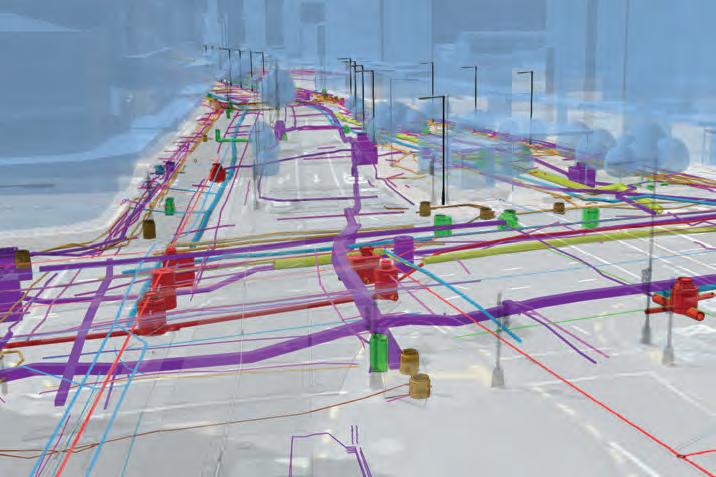

“We create accurate utilities models. We can help people do that, or we can provide an environment where users can do that themselves,” Wiffen says.
“We’re helping people to not just take the existing records of utilities and combine those before making a design. It’s providing an understanding through a subsurface utility engineering process to identify where these risks lie.
“It’s also an understanding of the legacy that we’re leaving behind at the end of a project. How do we make sure that we’ve improved our understanding about the underground? What’s the digital legacy we’re leaving behind?”
Reveal’s platform has already been utilised on crucial works during the Christchurch earthquake rebuild, as well as infrastructure works such as the Let’s Get Wellington Moving project.
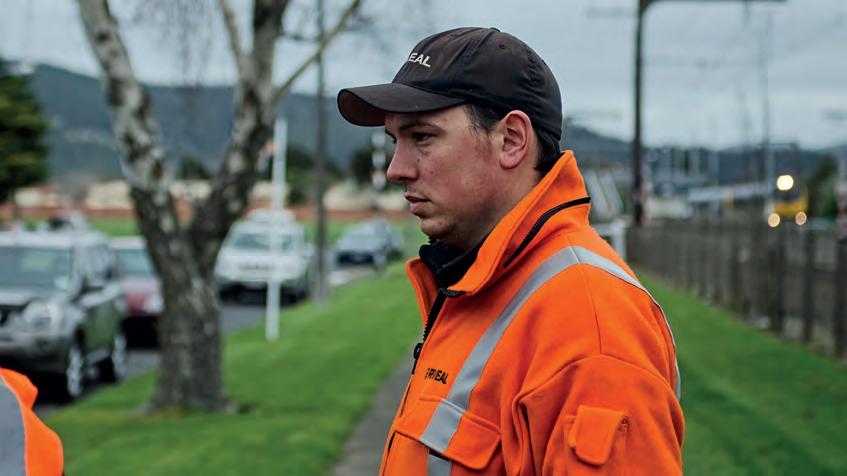
The company’s work on the latter also included the world’s largest subsurface utility model (as of August 2022).
Reveal expect the platform to also be used in more infrastructure projects across Australia in the near future.
GRATIFYING GROWTH
Wiffen says the benefits of the platform have been substantiated through positive feedback from users and project stakeholders.
“I’ve had customers say that ‘if I didn’t have
the information that was provided to us through the platform, we would have had a massive utility strike’. They say that would’ve had a huge project delay or even a death,” he says.
“By having this information available to them during the planning stage, asset owners and contractors have been able to create a safe project through design. It’s allowed their teams to work faster and safer.
Wiffen believes that the real world and professional experiences of the Reveal team have contributed to what is now a “pioneer” in the subsurface space.
He says Reveal’s development and services are backed by a diverse staff, originating from a range of industries. He says this diversity has greater supported both idea generation and innovation throughout the company.
“We’ve got people who are masters of their craft, people that are geophysicists,
geologists, engineers, technologists, project managers, accountants, economists, you name it.”
“Everyone is treated as an equal and this culture has been huge for us. What’s been really special to me is that as the company has grown, it’s given us more resources to invest back into our staff through different training and development programs.”
Reveal recently celebrated its 11th anniversary. A milestone that reflects not only the growth of the company, but also the moving world of subsurface detection technology.
The company is also now pushing further into the international markets.
“The biggest challenge is that these markets are huge, so we’ve been learning as much as we can,” Wiffen says.
“One of the biggest differences across some markets is where risk potentially lies. In New Zealand, there’s differences of where the control or change can happen on a project, particularly on the governance side of the project.
“In other areas, such as Southeast Asia, everything is on the contractor. So those motivations can be quite different.”
Wiffen says this learning has been invaluable.
“As a business we’ve been getting lots of validation that this is a phenomenal way to approach this systemic problem. That we can meet that challenge and grow the company globally is incredibly exciting,” Wiffen says.
“Of huge importance to us is, the value set that we have as a business and imbuing these values into our products and technologies –creating that positive change.”
roadsonline.com.au 29 TECHNOLOGY
Reveal CEO and Founder Sam Wiffen.
The platform has already been used on some of New Zealand’s largest infrastructure works.
ACCELERATING CHANGE
WAMARRA AND SYMAL ARE AIMING TO CREATE MORE OPPORTUNITIES AND REMOVE BARRIERS TO THE EMPLOYMENT OF ABORIGINAL PEOPLE WHILE USING
throughout the sector. This led to the foundation of Wamarra.
Heta himself is a proud Aboriginal man of the Wiradjuri Nation in central New South Wales. He says the creation of Wamarra has ignited a change throughout the construction industry.
“I started the company around three and a half years ago with a clear intention of providing career opportunities to Aboriginal people. Currently Aboriginal participation is a criterion under the social procurement framework which is relevant to all government funded works,” he says.
“Historically, Aboriginal participation has been met through transient outcomes. These outcomes don’t have a focus on building sustainable employment and career opportunities.
“Starting this company was really about providing a genuine solution to social
provides job security and all of the benefits associated. My business partners and I share the same values and same vision,” Heta says.
“It’s something that we’re really proud of because an investment in your people can ultimately lead to a successful business.”
Heta believes implanting systemic change begins with supporting new habits.
“We have a tier of management and leaders that can guide new entrants into the industry and start creating change. That’s really where we’ll see change, if we talk about breaking the cycle of disadvantage, it really starts with mum and dad,” he says.
“Having their parents getting up to go to work every day in some ways can create this subconscious view on what the new norm is. It can help to create role models within families and within the community.
“The feedback is really positive. We’ve
meaning ‘to build’. And build it has.
Since its inception, Wamarra has steadily grown and increased its capabilities to suit both private industry and government works.
The company has now contributed to major infrastructure works such as the Monash Freeway upgrade, North East Link and a number of Level Crossing Removal projects in Melbourne.
Wamarra already has plans in place to support further growth, with objectives such as a retention rate of more than 95 per cent across its staff and supporting a minimum of 55 Aboriginal people with employment over the next 12 months.
A COMPANY WIDE ETHOS
Wamarra forms part of the Symal Group which includes Symal Infrastructure, one of the largest providers in Victoria, with an annual

30 ROADS AUGUST 2023
Symal uses Bluebeam software as part of its works on major infrastructure projects.
turnover of more than $750 million.
Matthew Gurney, General Manager, Symal Infrastructure says the establishment of Wamarra has helped to create internal change.
“We saw some real long term benefits that required some short and long term investment. As one of the largest civil employers in Victoria we’ve always valued our own internal skills. This is an extension of that,” he says.
Gurney says Heta has made a “massive impact” on both Symal and the wider industry, helping to accelerate a cultural shift.
“The number one goal of Wamarra is to provide long term upskilling employment for Aboriginal people above all else. Hayden has been instrumental in that. He’s always prioritised this as the number one priority from a board level, all the way down to the construction site.


“He’s made a huge impact and he’s been a great educator in this space.
Gurney says these impacts can be seen firsthand throughout the business.
“Wamarra is something that our people are truly proud of. For some, it’s part of the reason why people come and work at Symal,” he says.
UNITED BY TECH
Beyond their commitment to changing the culture towards employment across the construction and infrastructure sectors,
Symal and Wamarra also share a vision when it comes to their use of construction software.
Both companies utilise Bluebeam software for virtually their entire infrastructure pipeline, across multiple disciplines.
Symal and Wamarra’s engineering teams use the software across a variety of functions, as Gurney explains.
“From a pre-contract phase at the beginning of a job, [our engineers] use it for a lot of the quantification of jobs. Then as we enter the delivery phase, in a similar way, they use it for
their cost forecasting. They’re able to measure up the plans and then use that information to manage drawing revisions,” he says.
“It has the unique ability when they import a new set of drawings, they can overlay the old set and see what’s changed. The other way that they use is delivering messages to the field.
“They also do their vehicle movement plans on site as well as their environmental management plans. They use it in a lot of ways.”
Gurney says Bluebeam software is used across the whole business, contributing to works such as the widening of the Monash Freeway for client Major Road Projects Victoria.
Similarly, Wamarra has used Bluebeam software on works that form part of Melbourne’s Level Crossing Removal Project. Hotak Akran, Site Engineer says he almost uses the software daily. The software provides greater flexibility during the planning process.
“I use Bluebeam for a variety of things. The main one is plan take-offs, so I can use drawings to give us a better idea around quantities of certain materials, I can estimate the meterage of concrete, garden beds and more,” he says.
“I also use it to create sketches for anything that’s on site that might be different to what’s in the site drawings, or even for any ideas that might come up on site. Thanks to the software, we can cater to these as best as possible.
“I’m not sure how I’d go without it,” he jokes.
roadsonline.com.au 31 TECHNOLOGY
“I USE BLUEBEAM FOR A VARIETY OF THINGS. THE MAIN ONE IS PLAN TAKE-OFFS, SO I CAN USE DRAWINGS TO GIVE US A BETTER IDEA AROUND QUANTITIES OF CERTAIN MATERIALS, I CAN ESTIMATE THE METERAGE OF CONCRETE, GARDEN BEDS AND MORE.”
Both Symal and Wamarra are united by their commitment to removing barriers to Aboriginal employment.
Hayden Heta, Managing Director – Wamarra.
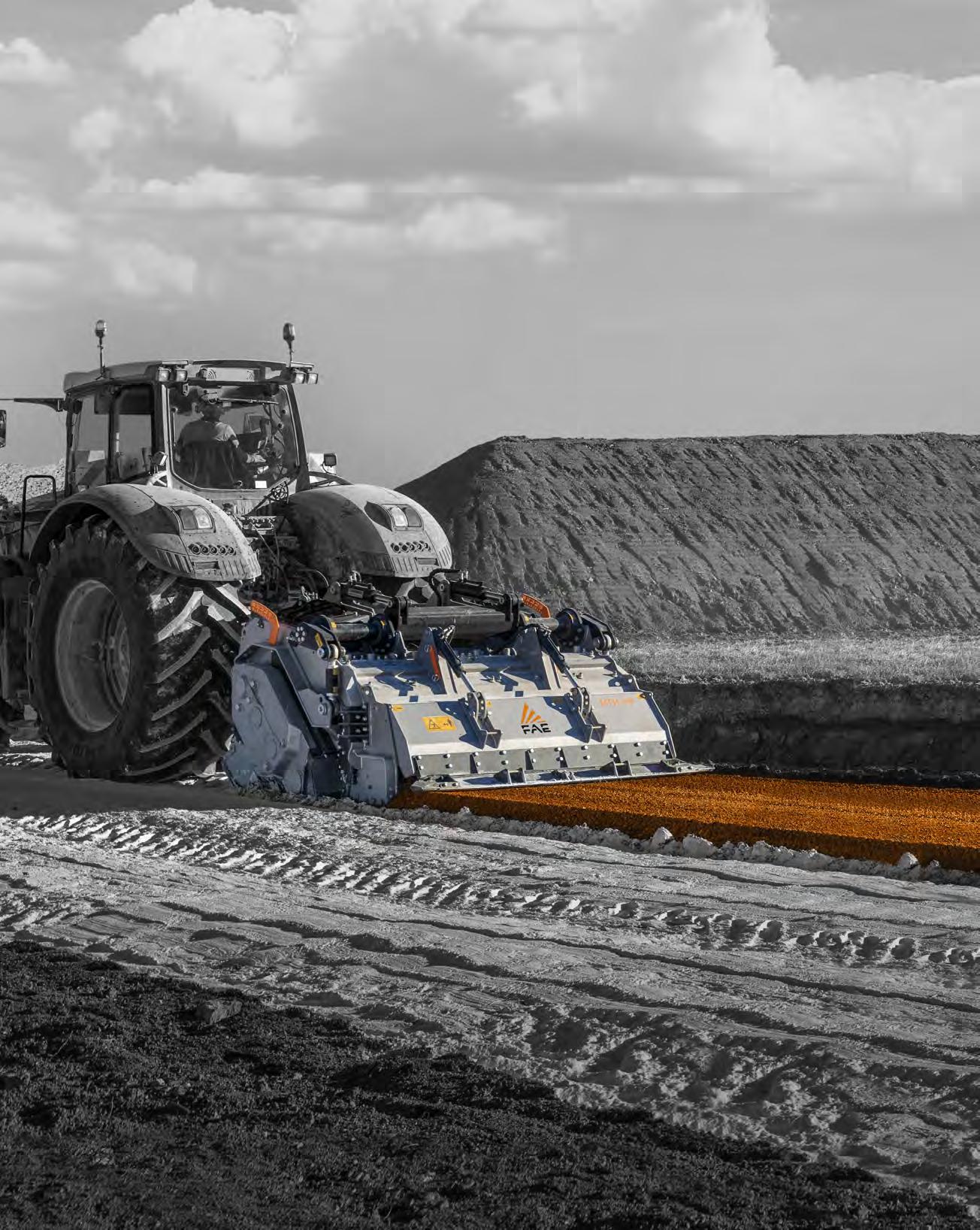
FAE MTH MAXIMIZE YOUR POTENTIAL Be more productive with the FAE MTH multitask head for 300-500 hp tractors. Rock grinder, stone crusher, asphalt shredder, and stabilizer all in one. Experience top performance, made possible with the innovative variable geometry mixing and grinding chamber that allows you to work the soil with extreme precision and efficiency. Contact us to find the right FAE product for you: Ph. +61.3.9706.4088 - Toll free 1300.981.337 - info@fae-ap.com.au fae-group.com
TRIALS UNDERWAY FOR AUSTRALIAN-FIRST SAFETY TECHNOLOGY

Heavy vehicles working on the first stage of the Mickleham Road Upgrade in Victoria will be the first in Australia to benefit from new safety technology.
The new MAX-SAFE technology has been installed in some heavy vehicles being used on the road project – with trials of the audible and flashing light alert system to help reduce the likelihood of injuries and deaths associated with heavy vehicle movements.

The Side View technology, as part of the MAX-SAFE system, uses an artificial intelligence smart camera to detect specific vulnerable road users and not other objects or obstructions.
Items in vicinity could include a pedestrian, cyclist or scooter rider, in particular during left-hand turning manoeuvres.
The automatic detection system sends an alert to the operator within the cabin. Electronic flashing lights and alarms will initiate inside and outside the vehicle,
providing the crews who are operating heavy vehicles and machinery the advanced warning they need to assist with avoiding an unexpected collision. It also acts to alert those outside of the vehicle.
Without intervention, pedestrians, cyclists, and scooter riders could be at a heightened risk of entering a heavy vehicle operator’s blind spot. Instead, this system aims to negate the risk and maintain a form of visibility.
The trial is the result of a collaboration between Major Road Projects Victoria, construction partner BMD, and SGESCO-MAX, to find new ways to reduce the likelihood of safety incidents with members of the public during construction and around heavy equipment on site. Success of the new technology will be closely monitored and evaluated.
“Through close collaboration with our construction partner BMD, we’ve developed this trial of the MaxSafe
technology – providing the critical audio and visual warnings to not only the operator within the cabin, but also those vulnerable road users outside of the heavy vehicle,” says Major Road Projects Victoria Area Safety Manager Kelvin Doyle.
The safety trial is part of the Mickleham Road Upgrade, which is building extra lanes in each direction on Mickleham Road between Somerton Road and Dellamore Boulevard, along with new traffic lights, intersection upgrades, and better walking and cycling connections
According to the Victorian Government, the Mickleham Road between Somerton Road and Dellamore Boulevard is used by more than 25,000 vehicles each day and is a key arterial route for Melbourne’s growing north-west.
The Victorian and Australian governments have invested $222 million for the Mickleham Road Upgrade. Stage One of the project is expected to be complete in mid-2025.
roadsonline.com.au 33 NEWS
The technology will help to increase the safety of road users near heavy vehicles. Image courtesy of the Victorian Government.
The first test trains have entered the Metro Tunnel, a landmark moment for the biggest rail project in Victoria since the City Loop.
Two next-generation High Capacity Metro Trains entered the twin nine kilometre tunnels at the South Yarra tunnel entrance and travelled 1.7km to Anzac Station, directly under St Kilda Road.
The journey was years in the making and marks the start of the project’s next major testing phase inside the new tunnels and stations, which will stretch into 2024.
Over the coming months, crews will run trains back and forth between the five stations. The basics, such as lining the trains

FRESH TRIALS FOR NEXTGENERATION TRAINS CONTRACT AWARDED FOR 219-MEGAWATT BATTERY CONSTRUCTION
CIMIC Group’s UGL has been selected for the design and construction of the Collie Battery and associated energy infrastructure in Western Australia.
The Collie Battery is a 219MW/877MWh battery energy storage system (BESS) to be stored in the Western Australian town of Collie.
Neoen’s Collie Battery will provide up to four hours of energy storage and will connect to Western Power’s substation, part of the South-West Interconnected System (SWIS).
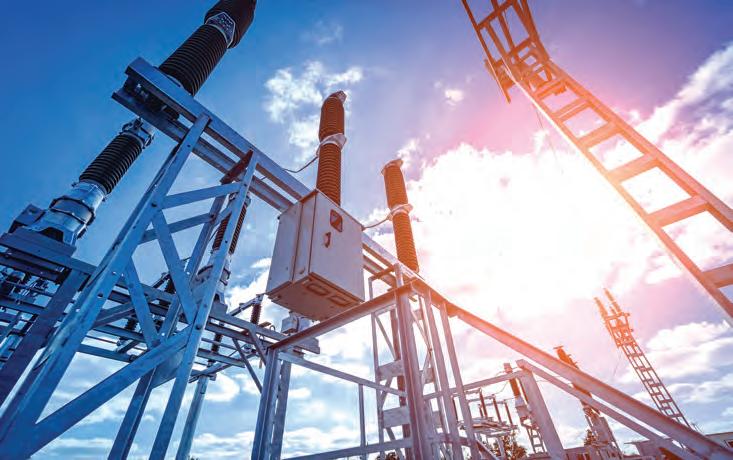
Neoen, which awarded the contract to UGL, is a specialist, independent producer of renewable energy.
The Collie Battery aims to provide short duration storage in the peak times to ease pressure on the grid.
The battery will provide grid stability and other grid services, which will also encourage more integration of more renewable energy
up with the platforms, will be tested first. Operators will then gradually increase the complexity, from one train at low speed using minimal power through to multiple trains at greater speeds.
Various equipment and systems will be tested to make sure the Metro Tunnel is safe and ready to open to passengers in 2025 – a
year ahead of schedule.
The Metro Tunnel is said to enhance the way Victorians travel around the suburbs, city and state by freeing up space in the City Loop, slashing travel times and allowing for more than a half a million more passengers a week during peak times across Melbourne’s train network.

into the network.
UGL will be responsible for the design, construction, testing and commissioning of the 33/330kV substation, the installation of the Tesla2 XL Megapacks and the associated balance of plant infrastructure.
UGL’s scope also includes the replacement of an existing bridge and construction of an access track to the site.
CIMIC Executive Chairman Juan Santamaria says UGL is pleased to be able to apply its knowledge on a project such as the Collie Battery.
“Reliable energy supply that helps to contribute to Australia’s net-zero aspirations is essential, with battery energy storage systems
playing a key role. As a leading designer and constructor of electricity generation and storage assets, UGL has delivered 17 major renewables generation and storage projects,” Santamaria says.
UGL has commenced work on the project, which is expected to be completed in late 2024.
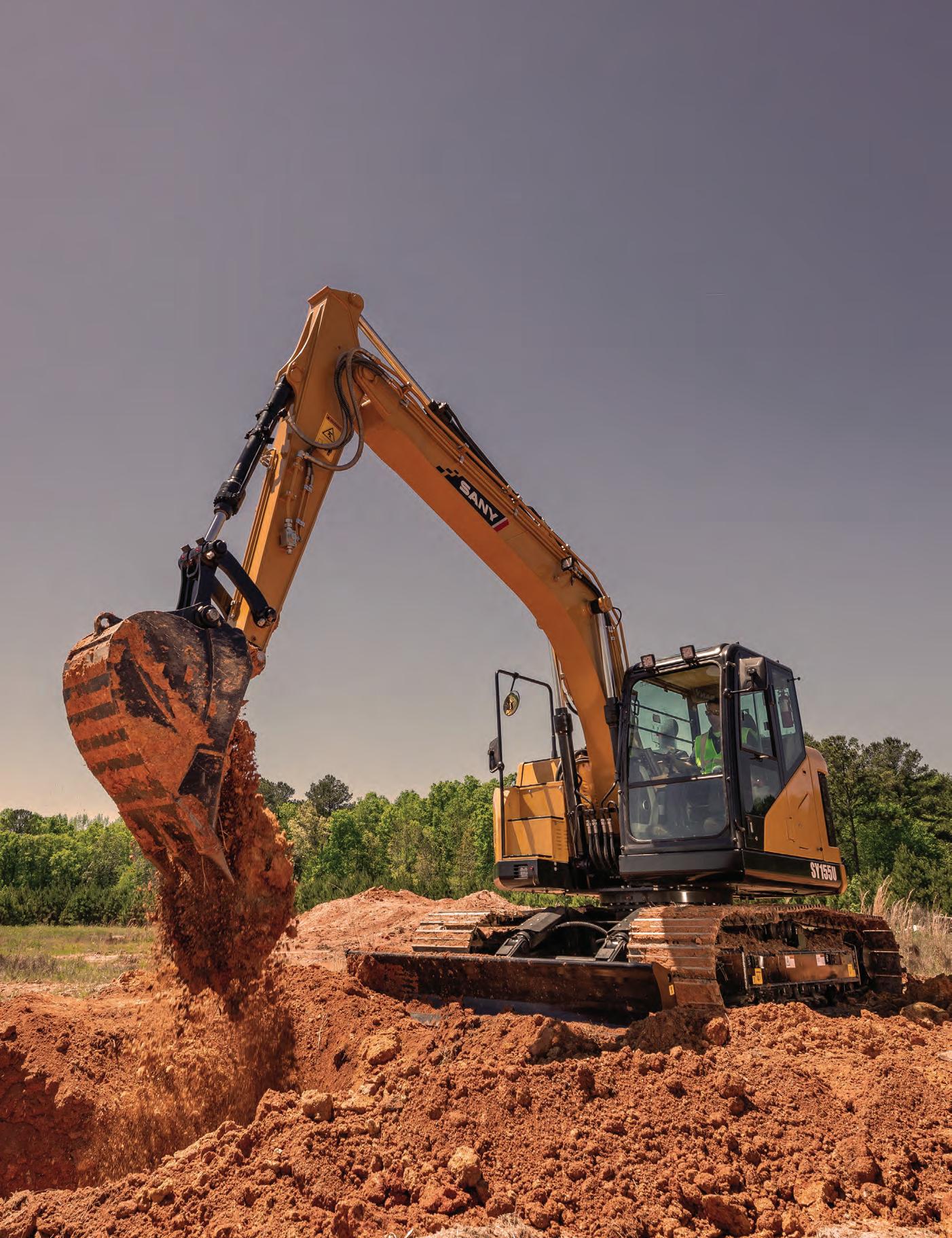
Neoen Australia Chief Executive Officer Louis de Sambucy commended UGL for its hard work.
“This is our third big battery with Tesla and UGL, and we appreciate being able to leverage the experience and trust built across a number of years for our first major project in Western Australia,” de Sambucy says.
34 ROADS AUGUST 2023 NEWS
The next generation trains are being used as part of ongoing tests for the Metro Tunnel in Melbourne.
The Collie Battery will provide short duration storage in peak times to ease pressure on the local electricity grid.




MOVING TOMORROW, TODAY WWW.SANYAUSTRALIA.COM.AU WWW.SANYAUSTRALIA.COM.AU
A FRESH PERSPECTIVE
CHANGES IN UNDERWRITING AGENCIES OF AUSTRALIA’S SENIOR LEADERSHIP ARE SET TO PRESENT NEW OPPORTUNITIES FOR THE ORGANISATION AND ITS CLIENTS, AS WELL AS THE WIDER INDUSTRY.
Underwriting Agencies of Australia (UAA) has recently undergone a period of change.
Throughout its 30-year history, the company has withstood global impacts, such as the Global Financial Crisis and lasting impacts of the COVID-19 pandemic.
Now the company is strengthening its position as one of Australia’s largest providers of specialist plant and machinery insurance solutions, in part due to changes across some of its executive and senior leadership positions.
The most notable change is the announcement of Stan Alexandropoulos as UAA’s new Chief Executive Officer.

Alexandropoulos, formerly the Chief Operating Officer, says multiple factors influenced the leadership changes.
“Firstly, our previous CEO retired, creating an opportunity for transitions within the company,” he says.
A core component of this has been maximising new opportunities from across the sector.
“The timing of these changes also aligns with our merger with MECON, which has brought together two strong brands, each excelling in their respective fields,” Alexandropoulos says.
“The merger of UAA and MECON presents an opportunity for synergy, as the two brands complement each other to a degree. By making these leadership changes now, we can focus on increasing the efficiencies of both organisations and enhancing their abilities to effectively serve our customers.”
The merger combines two of the leading providers of insurance solutions for their chosen industries (plant and machinery and construction insurance respectively).
Throughout the merger process, emphasis was placed on providing continuity and stability in leadership, with Glenn Ross staying put as MECON Insurance CEO.
To further support the cohesion between both organisations, George Grasso will
Ross says the cultural change driven by the executive team offers an exciting future for both companies.
“[It’s created] a stronger and more cohesive management group with fresh initiatives, one of which is an expansion of the claims area with a heightened focus on service and expedient settlement times,” she says.
She says the leadership changes will also aid with an alignment of company values between UAA and MECON Insurance.
“Establishing a clear path of alignment for the direction of the company will see service standards enhanced, to both company and client – this is a ‘win-win’ opportunity,” she says.
AN EXCITING OPPORTUNITY
Another significant change is the appointment of Marc Crossman as the Group Strategy and Distribution Manager.
Crossman will oversee the sales and market strategy of both UAA and MECON Insurance. He’ll also manage strategic relationships and oversee the global marketing and branding work for the group.
He’s excited for the new opportunity, and says the changes will open new doors for growth and expansion into new markets.
“The goal is to enhance our offerings
36 ROADS AUGUST 2023
Stan Alexandropoulos, UAA’s new Chief Executive Officer.
to the industries we insure, drive future innovation, and continually improve our services,” Crossman says. “The infusion of new leadership perspectives sets the stage for innovation, enabling UAA to embrace emerging technologies and pioneer new approaches to insurance services.
“Ultimately, these opportunities ensure that UAA remains at the forefront of the industry, delivering exceptional value to its clients and stakeholders.”
Crossman is not shy of change and growth. He played a key role in UAA’s expansion into the Asian market in 2019. He says that changes, such as those to the UAA and MECON Insurance’s executive team, can help gain a competitive edge in the market, due in part to potentially improving productivity.
“The leadership changes are expected to increase operational efficiencies across the organisation,” Crossman says. “With a more focused distribution strategy, streamlined underwriting processes, and improved claims management, the UAA Group will be better positioned to optimise resources and deliver a higher level of service to our customers.”

He adds that he expects the leadership changes to help further improve the experiences of clients and partners across both UAA and MECON Insurance.

“While it’s still early days, I’m confident that with the support of the UAA and MECON teams, we will make significant strides in achieving our objectives,” Crossman says.
“Together, we can shape the future of the organisation and make a lasting difference in the industry. The possibilities are endless, and I am eager to embark on this exciting journey ahead.”
While only months into his new role as UAA CEO, Alexandropoulos says he’s already seeing an impact.
“Through improved experiences, enhanced offerings, innovative solutions, and a continued commitment to excellence, we aim to solidify our position as a trusted partner and provide the best possible service to our clients,” Alexandropoulos says.
“There seems to be a real buzz around the business at the moment and a renewed vibrancy and enthusiasm which is really encouraging.
“I am really excited about what the future holds.”
“WITH A MORE FOCUSED DISTRIBUTION STRATEGY, STREAMLINED UNDERWRITING PROCESSES, AND IMPROVED CLAIMS M ANAGEMENT, THE UAA GROUP WILL BE BETTER POSITIONED TO OPTIMISE RESOURCES AND DELIVER A HIGHER LEVEL OF SERVICE TO OUR CUSTOMERS.”
COMPANY PROFILE
Marc Crossman, Group Strategy and Distribution Manager.
Peta Ross, Group Development Manager – Systems, Process & Culture.
Roads




DON’T MISS AN ISSUE, SUBSCRIBE TODAY.
& INFRASTRUCTURE
AUSTRALIA’S ONLY SPECIALIST ROAD MANAGEMENT, CONSTRUCTION AND CIVIL WORKS MAGAZINE
& Infrastructure Australia is a leading news resource for the Australian roads, civil engineering, and infrastructure sectors. Catering to Australia’s civil and road construction industry, Roads & Infrastructure Australia is a key source for industry decision-makers, contractors, civil engineers and individuals in local and state government sectors and the private sector looking to keep up to date with important issues, developments, projects and innovations shaping the industry today. www.roadsonline.com.au/subscribe
www.roadsonline.com.au
INDUSTRY HEAD ON YOUNG GUNS READY TO TAKE
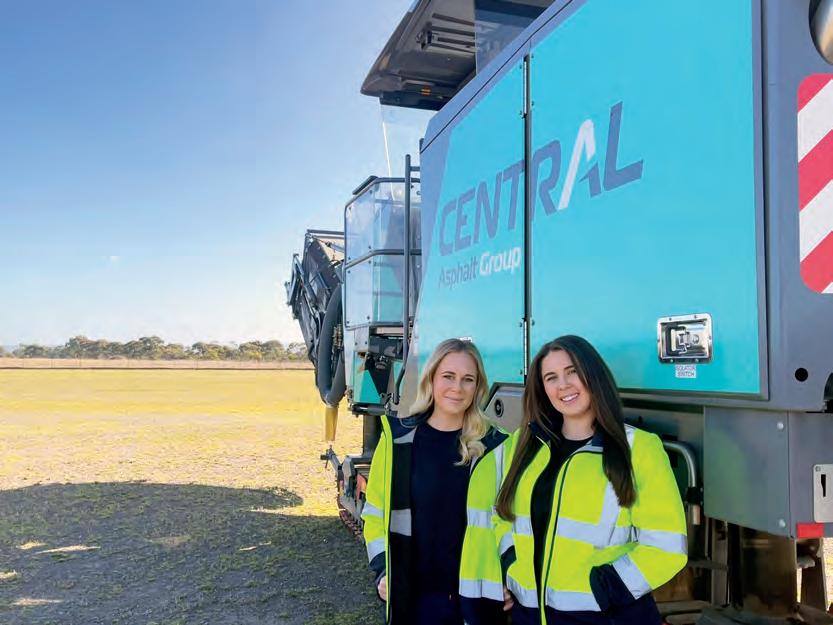
STARTING OUT AS A BOBCAT SPECIALIST IN 1990, DAVE SPERANZA WAS A SUBCONTRACTOR FOR A LOT OF VICTORIA’S ROAD CONSTRUCTION COMPANIES. FAST FORWARD TO 2023 AND HIS COMPANY, CENTRAL ASPHALT GROUP, NOW PROVIDES ROAD PROFILING, ASPHALT PAVING, CIVIL CONSTRUCTION, AND HEAVY HAULAGE TO THE ROADS INDUSTRY.



roadsonline.com.au 39
Central Asphalt Group provides a full package of road construction works.
Courtney Speranza, Administration and Machinery Operation and her sister Taylor, Operations Manager, at Central Asphalt Group (L-R).
Afamily-run business, Central Asphalt Group is about to go through a new phase.
Owner and devoted father David Speranza is supporting and opening the doors for his two daughters Taylor and Courtney to take the reins.
Taylor, who is the Operations Manager, and Courtney, who is in Administration and Machinery Operation, both started straight out of high school – albeit a few years apart – and they haven’t looked back.
“I finished high school in 2017 and I was accepted into university,” she says. However she decided to pursue her career with her father’s family business.
“My dad gave me the opportunity to come jump on board. It’s the
most knowledge you can gain getting experience working directly in the field. I took that opportunity and ran with it. He saw potential in me and put his faith in me. I guess it’s paid off. We’re thriving, which I’m grateful I joined back in 2018 - I haven’t looked back since,” she says. Her sister had a similar experience.
“Courtney joined the family business back in 2014 – fast forward 10 years she now has obtained relevant competencies and licences to perform in field tasks such asphalt placement and HC Truck Driving,” she says.
Speranza admits she matured quickly as she has taken over parts of the business. Being 18 when she first started, she realises she couldn’t just go out and party like her peers. She had responsibilities
to the business, her father, and other employees.
“I had to develop different aspects of my personality and skills, like leadership, problem solving and professionalism –every day is different, and I continue to grow in the role,” she says.
Both Speranza and her sister are part of their father’s succession plan to take the company to the next level.
“For me, our succession plan started when we rebranded the company,” she says. “Back in 2021, we decided to show the industry what we are all about”.
Taylor says the company rebranded because it needed to present all that Central Asphalt Group offers – a full package of road construction services. The old name suggested they only had bobcats on offer, when they’ve got an array of machinery available to the industry.
“Aiming to be a head contractor ourselves and winning our own contracts and tenders has been a focus for us. Since rebranding we have successfully secured and delivered multiple multimillion-dollar contracts with our local governments in asphalt resurfacing and civil construction,” she says.

“We have also focused on updating equipment to state of the art machinery including our new Wirtgen W210 FI road profiler which is an employee favourite.”
Both Speranza and her sister know that it’s not just the capabilities of the equipment that help win contracts Customer satisfaction is a big indicator of their success.
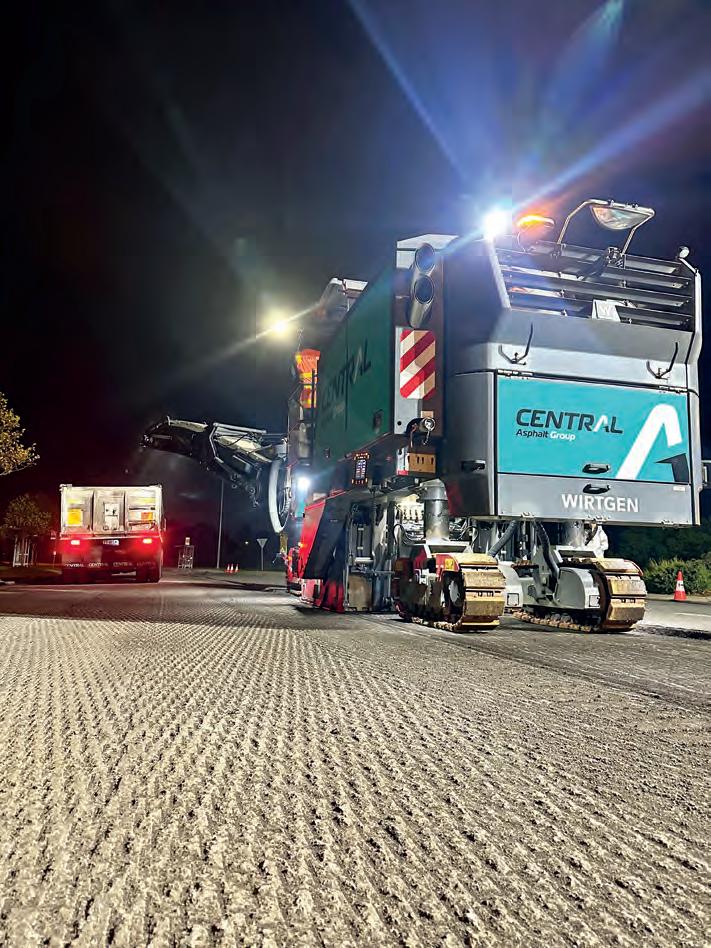
“We take pride in delivering quality projects and maintaining good working relationships with our clients,” she says.
Speranza is both excited and passionate about where the company is heading in the industry. She is also acutely aware that the industry is not traditionally dominated by women. While nobody has said it out loud, there were doubters, but that only motivated her to work harder.
“Being young females in the industry, I am excited to see what the future holds for women in construction,” she says.
“I think this industry has grown so much in being able to recognise and support women. Being in this position, to be able to create opportunities for other women is something that really excites me. It’s great to be able to do that and create changes that makes a difference.”
40 ROADS AUGUST 2023 COMPANY PROFILE
“I THINK THIS INDUSTRY HAS GROWN SO MUCH IN BEING ABLE TO RECOGNISE AND SUPPORT WOMEN. BEING IN THIS POSITION, TO BE ABLE TO CREATE OPPORTUNITIES FOR OTHER WOMEN IS SOMETHING THAT REALLY EXCITES ME.”
Wirtgen Group machinery form part of Central Asphalt Group’s fleet of quality machinery.
MEGATRANS is Australia’s largest integrated conference and exhibition dedicated to the logistics industry. MEGATRANS will showcase the latest in artificial Intelligence (AI), robotics, automated racking, telematics and route optimisation, warehouse automation, intelligent fleet systems, blockchain, Internet of Things, big data and advanced analytics.
 Melbourne Convention and Exhibition Centre
Melbourne Convention and Exhibition Centre
REIMAGINING THE SUPPLY CHAIN MEGATRANS returning 18-19 September 2024 BOOK YOUR STAND TODAY IN CONJUNCTION WITH
megatrans.com.au
100 YEARS OF
BITUMEN EMULSION, AND MORE
AS DR. HAMIDREZA SAHEBZAMANI – TECHNICAL SERVICES MANAGER, SAMI BITUMEN TECHNOLOGIES WRITES, BOTH THE COMPANY AND THE INDUSTRY HAS THRIVED OFF MORE THAN 100 YEARS EXPERIENCE IN BITUMEN EMULSIONS.
The road industry has come a long way since the days of informal and dusty pathways. Today, we witness an intricate network of highways, byways, and city streets that connect communities, facilitate trade, and enable the movement of goods and people. Behind this impressive growth lies a key ingredient that has played a pivotal role in the longevity and performance of surfaced roads: bitumen emulsion.

HISTORY
Determining the exact date and inventor of an industrial product or technological process can be challenging. The same applies to bitumen emulsions and their history. Initially, tars were commonly used as road binders, with the first paving taking place in 1854 in Sallinis, Auch, France. However, the origins of the first “direct emulsion” of bitumen in water are less certain. Experiments with mixing “heavy crude oils” or “naphtha oils” with water began in the early 20th century. Around 1903, a “heavy crude
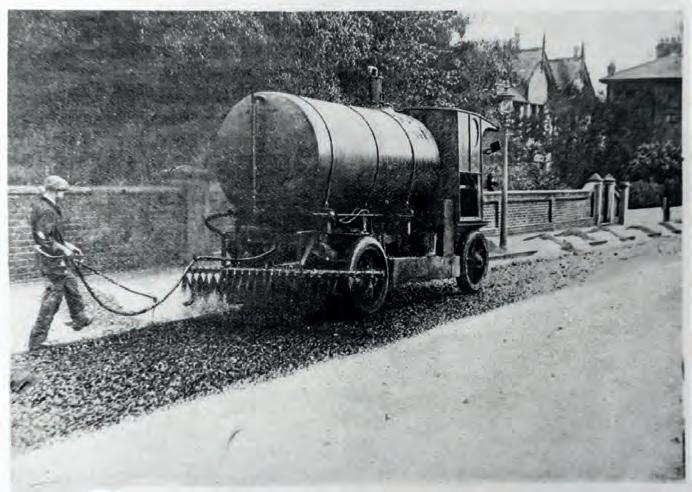
42
Spraying bitumen emulsion for tack coat applications in the olden days.
oil emulsified and saponified by ammoniacal water” was applied in Beaulieu-sur-Mer, France. Additionally, in 1904, “emulsified crude oil” was used on the Ardennes car racing circuit to prevent accidents caused by racing cars. Although early patents mainly focused on oil emulsions with higher water content and less bitumen.
It was in 1923 that Hugh Alan McKay, an English chemist working for Shell, introduced the modern formulation of bitumen emulsion, consisting of 70 per cent bitumen and 30 per cent water, which closely resembles the mixtures used in present-day road construction and we may consider it as the birth of modern bitumen emulsion. His invention went on to become what is known as COLAS (COLd ASphalt) which was the brand name given to bitumen emulsion by Shell.
The adoption of bitumen emulsion gained momentum quickly. In France alone, around a hundred tonnes of emulsion were used in 1923. The following years witnessed a substantial increase, with consumption reaching 2500 tonnes in 1924 and 6000 tonnes in 1925. Internationally, the combined production of bitumen emulsion in countries like England, Germany, Denmark, Australia, and India exceeded 150,000 tonnes by the end of 1926.
A significant advancement in bitumen emulsion occurred in 1951 with the introduction of cationic bitumen emulsions. These cationic emulsions, characterised by their positive charge, gained popularity due to their improved properties and performance. Within just ten years of their introduction, cationic emulsions accounted for 50 per cent of total production in 1962, and this percentage skyrocketed to over 92 per cent by 1971.
The primary advantage of utilising cationic bitumen emulsion instead of anionic emulsions lies in the chemistry of cationic emulsions, enabling them to adhere to both positively charged aggregates like limestone and basalt, as well as negatively charged materials such as silex, quartz, and granite. This level of adhesion is not achievable with anionic emulsions and negatively charged aggregates.
SUSTAINABILITY ADVANTAGES
Bitumen emulsion in the road industry offers several sustainability advantages over traditional cutback bitumen. One significant aspect is the improved safety it provides. Unlike cutback bitumen, which requires heating to become liquid enough for the application, bitumen emulsion is already in a lower viscosity state at ambient temperatures. This eliminates the need for heating, reducing the risk of fire, explosions, and fatal injuries associated with handling and heating petroleum products.
greenhouse gas emissions and climate change. The production and application of cutback bitumen also pose the risk of soil and groundwater contamination due to the leaching of solvents.
Bitumen emulsion, on the other hand, has a lower carbon footprint as it consumes less energy during production and relies on water as a carrier. The reduced solvent content in bitumen emulsion minimises the risk of environmental pollution, preserving ecosystems and water quality.
Australia boasts the largest road network per capita globally, spanning over 870,000 kilometres, making it an extensive network. Approximately 40 per cent of this network is paved using various bituminous products. These road surfaces typically involve essential applications such as prime coats, initial seals, SAMI seals, and spray seals. However, it is unfortunate that a significant quantity of cutback products is still utilised in these applications in Australia.
In mentioned applications, cutback products are employed for precoating aggregates, providing a penetrating coat to base courses, and reducing the viscosity of bitumen or modified binders prior to spraying. Remarkably, the road industry in Australia consumes a staggering amount of approximately 12,000 tonnes of kerosene and 15,000 tonnes of diesel each year in the production process, excluding the fuels themselves.
This significant quantity could be greatly
Furthermore, bitumen emulsion contributes to better health outcomes for workers and surrounding communities. Cutback bitumen contains volatile organic compounds (VOCs) that can be released into the air during application and construction. Prolonged exposure to these VOCs can have detrimental effects on respiratory health and overall well-being. In contrast, bitumen emulsion significantly reduces the emission of volatile compounds, creating a healthier work environment with fewer respiratory risks. In terms of environmental benefits, bitumen emulsion offers advantages in reducing carbon footprint and minimising environmental pollution. Cutback bitumen relies on petroleum distillates and solvents derived from fossil fuels, contributing to
reduced by replacing cutbacks with bitumen emulsions, resulting in an annual decrease of approximately 12,300 tonnes of CO2e emissions according to the AfPA LCA calculator.
The use of cutback bitumen has been prohibited in numerous countries, including the USA and Europe for decades. Australia remains one of the largest consumers of cutback products globally, despite being one of the pioneering countries to adopt bitumen emulsion approximately 100 years ago. Regardless of the underlying reasons, the current outcome is undesirable, emphasizing the need for a change in mindset.
By embracing the utilisation of bitumen emulsion, road construction projects showcase their dedication to sustainability and

roadsonline.com.au 43 COMPANY PROFILE
Colmat emulsion being applied for Microsurfacing application in modern times.
“BITUMEN EMULSION OFFERS A SAFER AND HEALTHIER ALTERNATIVE TO CUTBACK BITUMEN, ALL WHILE MAINTAINING THE NECESSARY TECHNICAL REQUIREMENTS. “
environmental stewardship. This decision not only reduces the risk of accidents and health hazards but also enhances the overall wellbeing of workers, neighbouring communities, and the environment.
Bitumen emulsion offers a safer and healthier alternative to cutback bitumen, all while maintaining the necessary technical requirements. This choice ensures the durability and sustainability of road infrastructure while mitigating the impact on both human health and the environment.
APPLICATIONS
Bitumen emulsions play a crucial role in various aspects of flexible or composite pavement construction, maintenance, and preservation. They find application in multiple layers of the pavement, offering a wide range of benefits. From the base layers, where emulsions (ETB) can be used to treat base courses, to surface layers where structural cold wearing courses known as grave emulsions can be applied.
Emulsions serve as penetrating prime coats, primer seals, and tack coats with high shear strength. They can be sprayed as fog seals, rejuvenating/enrichment seals, or scrub seals to extend the lifespan of aged surfaces and effectively seal them to prevent water penetration. Additionally, emulsions are employed in various maintenance applications such as spray seals, slurry seals, microsurfacings, cape seals, otta seals, graded seals, seal coats, etc. They can even be used in thin layer surfaces like bonded wearing courses or as storable/packaged cold mixed materials for filling potholes or as cold materials in crack sealings/fillings.
The use of bitumen emulsion in the world has always been growing due to the expansion of road construction and maintenance
activities, as well as its substitution for cutback products and conventional hot applications. According to the key figures from IBEF, in 2019, the global consumption of bitumen emulsion amounted to 8.6 million tonnes, accounting for 7.8 per cent of the total global bitumen consumption. However, in Oceania, this ratio stood at only 1.8 per cent, making it the lowest in the world.
Bitumen emulsions provide a plethora of opportunities to the road industry, enabling versatile and effective solutions. However, successful utilisation of bitumen emulsion requires a deep understanding of manufacturing and formulation engineering, precise selection of chemicals and raw
emulsion is expected to further improve, expanding its applications and contributing to the development of resilient and eco-friendly road networks.
Looking ahead, bitumen emulsion will continue to shape the road industry, offering cost-effective solutions and contributing to the advancement of sustainable road construction and maintenance practices. With its ongoing development, we can expect even more efficient and environmentally friendly roads in the future.
SAMI Bitumen Technologies has been a pioneer in bitumen emulsion innovations and production for nearly half a century. SAMI offers a range of unique products tailored for various applications. Two well-known emulsion primes from SAMI are SAMIprime K2 and K2P, which are commonly used as prime coats for granular, stabilised, and concrete base layers.
SAMIBioPrime is a fast-penetrating prime coat formulated with 100 per cent petroleum solvent-free ingredients, aiming to achieve a carbon-neutral product. For superior bonding without tracking issues, SAMIbond 007 is a non-tracking polymer-modified tack coat that provides high shear strength to adhere asphaltic layers to underlying surfaces without sticking to construction vehicle tires.
SAMIfloat is a polymer-modified cationic high float emulsion, specifically designed for exceptional performance in cold seasons and suboptimal aggregate conditions during spray sealing applications.
materials, and the establishment of the appropriate production processes. The knowledge and expertise in these areas are critical as they can make the difference between a successful application and potential challenges when working with bitumen emulsion.
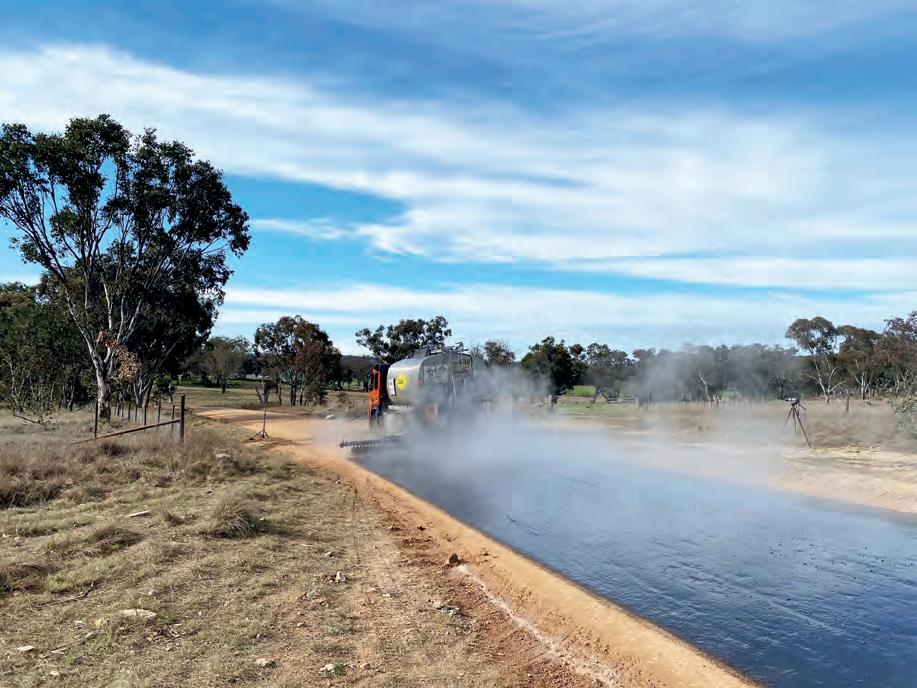
SAMI’S POSITION
As we celebrate 100 years since the advent of modern bitumen emulsions, it is crucial to acknowledge their significant role in improving road infrastructure. Bitumen emulsion has revolutionised the road industry, transforming road design, construction, and maintenance. It brings advantages such as durability, sustainability, safety, and better performance. As research and innovation continue, bitumen
SAMIflex encompasses a range of highperformance polymer-modified emulsions suitable for spray sealing and Stress Alleviating Membrane Interlayers. Additionally, Colmat emulsions are formulated to ensure the durability and workability of microsurfacing applications in all seasons, with minimal downtime before opening to traffic.
These examples exemplify SAMI’s commitment to research, development, and promotion of bitumen emulsion within our industry, bridging the gap between our country and global standards.
References
1. Bitumen emulsion, 2008, USIRF (French Union of Road Industry Associations)
2. MS-19, Basic of Asphalt Emulsions, Asphalt institute
3. https://ergon.com/updates/a-century-of-asphaltemulsions-08-06-23
4. https://www.ibef.net/en/emulsions-2/key-figures/
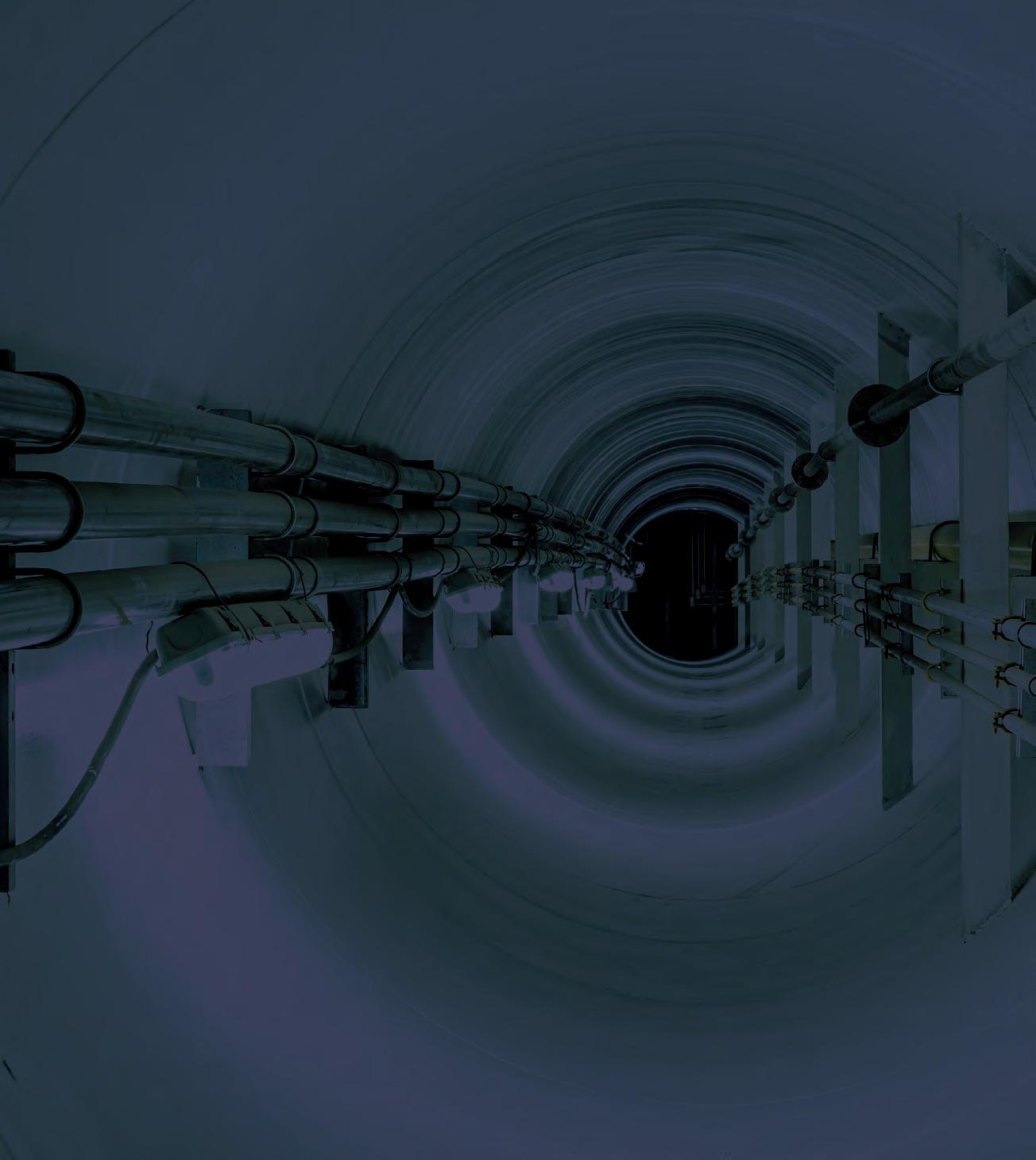
44 ROADS AUGUST 2023 COMPANY PROFILE
SAMIfloat emulsion for spray seal applications.
“BITUMEN EMULSION HAS REVOLUTIONISED THE ROAD INDUSTRY, TRANSFORMING ROAD DESIGN, CONSTRUCTION, AND MAINTENANCE. IT BRINGS ADVANTAGES SUCH AS DURABILITY, SUSTAINABILITY, SAFETY, AND BETTER PERFORMANCE.”




www.nodigdownunder.com Brisbane Convention and Exhibition Centre 13-14 SEPT 2023 TICKETS NOW ON SALE Discover how trenchless technology is driving better outcomes for Australian infrastructure projects. REGISTER YOUR ATTENDENCE NOW! www.nodigdownunder.com nodigdownunder@primecreative.com.au #nodigdownunder PLATINUM SPONSOR GOLD SPONSORS SILVER SPONSORS BRONZE SPONSORS SUPPORTED BY CHARITY PARTNER OFFICIAL MEDIA PARTNER Australia
EMPLOYER OF CHOICE BEING AN
The job is just the start of what makes Komatsu an employer of choice. Colin Shaw, Komatsu Australia’s Executive General Manager, People and Strategy, says it starts with getting recruitment right but goes much further.
Komatsu Australia has won several awards for its human resource focus and the positive experience of its employees. Most recently, it was named in the 2023 AFR BOSS Best Places to Work List.
“Komatsu Australia is always proud to be recognised for our commitment to creating an environment that empowers employees to grow, excel and achieve their personal and professional goals. We really do believe that a supportive and positive work environment is critical to our success,” Shaw says.
He believes people will join a company for a job that pays well, offers good conditions, and offers opportunities to learn new skills. But the best employers want to do more than just get people through the door.
“We want our people to feel truly valued, to see real rewards for their commitment and to be able to achieve their goals both in and outside of work,” he says. “We want people to feel like they can bring their whole selves to work.
“We’ve strongly focused on what makes for a good workplace. We start from the basic elements like great facilities to address some less visible challenges. Some of those challenges include creating career pathways for women and other under-represented
groups and giving our people time to do the things that matter to them. We are known for walking our talk on topics like flexible working, bullying, and all the other things that can make the difference between a great day at work and one that is not so great.”
GETTING IT RIGHT, RIGHT FROM THE START
Komatsu’s award-winning Apprentice Development System has revolutionised how apprentices and trainees are trained and developed in the industry. It has earned widespread recognition, including Silver for Large Employer of the Year and Silver for Employing Australian Apprentices at the National Training Awards in 2022.
“The way our system is designed means that by the time our apprentices complete the program, they’ve achieved a competency level that would take about another year of experience for apprentices trained in conventional programs. It really supercharges our apprentices’ careers and helps them to reach their potential,” Shaw says.
The apprentice program is managed through the Komatsu Training Academy, which has two state-of-the-art, purposebuilt education centres in Brisbane and Perth, giving the company a strong presence on both the east and west coast.

“Our facilities offer a highly interactive and technologically advanced learning environment, and our workshop labs are specifically designed to deliver hands-on training for construction and mining class machines, ensuring that students gain practical skills and experience,” Shaw says.
“Our training facilities also incorporate several simulators, so trainees can safely learn on a range of machines from small utility machines right up to an ultra-class heavy excavator.”
The company currently has over 300 apprentices in training on the west coast and more than 200 on the east coast. It plans to build the total to over 600 in the coming year.
Half the current WA apprentices are women, and Komatsu selects apprentices based on potential rather than age. A
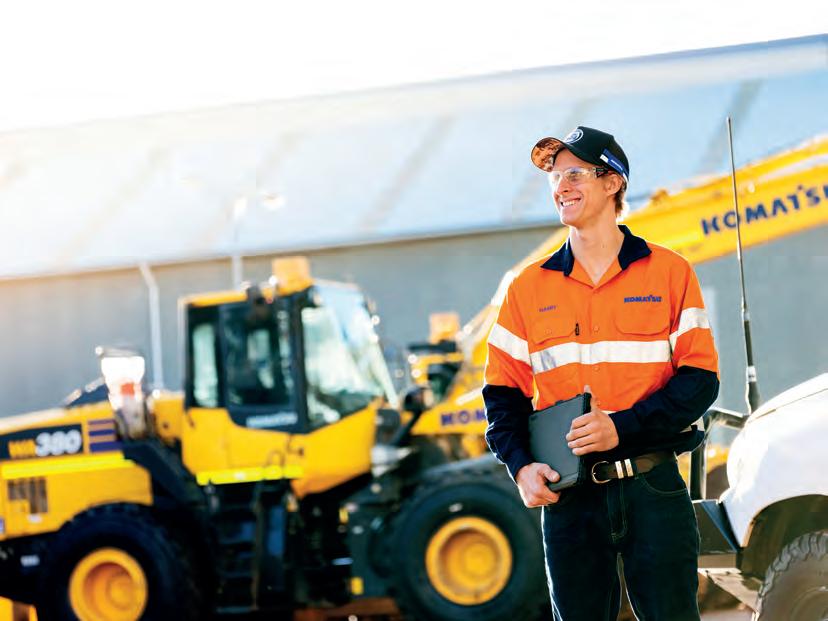
46 ROADS AUGUST 2023
IN A TIGHT JOB MARKET, EMPLOYERS ARE LOOKING FOR WAYS TO STAND OUT AND ATTRACT THE BEST CANDIDATES, BUT WHAT MAKES A TRUE EMPLOYER OF CHOICE, WHERE PEOPLE DON’T JUST TAKE A JOB BUT STAY, GROW, AND THRIVE?
Komatsu is committed to providing opportunities for everyone as part of its goal to be an employer of choice.
few years back, they had a 47-year-old apprentice, and in the current intake, there are apprentices in their 30s.
“Flexibility for us isn’t just about how you structure a workday. It’s about how you think about what makes a good apprentice, a good mechanic, or any other role,” Shaw says.
Komatsu also recognises the importance of equipping apprentices with important life skills, such as mental health awareness, public speaking, road safety and fatigue management, drug and alcohol awareness, and various business skill sets.
TRAINING NEVER ENDS
The Komatsu Training Academy not only gives apprentices a great start to their careers but also supports continued training and upskilling for their people at every level.
“A big focus of the academy is upskilling people in their current roles, whether in leadership and management, operator skill proficiency development or customised technical training. We offer a mix of fully accredited courses and modules, along with purpose-designed operator, technical and management training,” Shaw says.
“Both our training academies are backed by expertly skilled trainers aimed at building the future workforce. Many of our training and courses focus on autonomous methods or using technology like Komatsu’s Smart Construction offering. The technology they’re learning about will ultimately help operators become more precise and accurate, leading to better onsite productivity.”
Komatsu Australia recently doubled its annual training investment to $12 million to drive greater impact for apprentices,

industry, and the economy.
FAMILIES AT KOMATSU
Shaw says recognising that their people have responsibilities outside of work is essential. “We understand the impact that happy and healthy families have on our people and community,” he says.
“If we can make it easier for our people to balance work with having children and raising their families, then, of course, we should. It means our people are happier, and we can keep those incredible employees who might otherwise feel they need to step out of the workforce to pursue their personal goals. It’s a win-win.”
The new Families at Komatsu replaces the company’s paid parental leave scheme and is a much broader program designed to
INCLUSIVE MEANS EVERYONE, EVERY DAY Komatsu has led the industry by putting diversity and inclusion on the agenda. The brand has won a range of awards for its Say Again? program to address casual workplace sexism and for its industry-leading training programs.
“We are always looking for opportunities to highlight the benefits diversity can bring to our organisation and address the barriers that may hold us back,” Shaw says. “We’re doing very well in our entry-level roles, with goals of 30-50 per cent women, compared with an industry benchmark of less than a third.
“We’re also making inroads on increasing female representation further up the corporate ladder by thinking more openly about the key skills in some of our leadership roles to enable us to recruit from a wider pool of applicants. That means that we don’t just look to people with a technical background – typically men in our industry – for roles where the key skills are around communication.”
Komatsu has partnered with the Western Sydney Wanderers women’s football team as part of its diversity and inclusion program.
“The [Western Sydney] Wanderers’ strategy echoes our business strategies here at Komatsu. We are both focused on creating an environment that offers equality and opportunities for women because we understand and know the unique value they can bring our workforce and teams,” Shaw says.
provide benefits and support to all types of families so that everyone can thrive in the business’ inclusive culture.
Key elements of the program include 16 weeks of paid leave for the primary carer of a new baby, plus four weeks of bonding leave for the secondary carer; plus, special paid leave for people who experience miscarriage or stillbirth.
A structured return-to-work program makes it easier to return to a role and provides ongoing access to flexible work arrangements.
“We’re really proud of this comprehensive program which really is about our people’s wellbeing,” Shaw says.
Komatsu supports its people to do the things that matter to them through initiatives like the Live Your Dream program. It provides $10,000 grants for employees to support a not-for-profit organisation or charity of their choice.
Shaw says the program is one Komatsu is proud to deliver for its employees.
“This initiative helps our people to support the causes they care about. It allows them to do something special they normally don’t have the provisions to do outside of work,” he says.
To find out more about Komatsu and the career opportunities available, head to www.komatsu.com.au/careers

roadsonline.com.au 47 MACHINERY & EQUIPMENT
The Apprentice Development system has been a key driver of Komatsu’s continued success.
“OUR TRAINING FACILITIES ALSO INCORPORATE SEVERAL SIMULATORS, SO TRAINEES CAN SAFELY LEARN ON A RANGE OF MACHINES FROM SMALL UTILITY MACHINES RIGHT UP TO AN ULTRA-CLASS HEAVY EXCAVATOR.”













Visit Melbourne’s leading construction and major infrastructure event Featuring: 15,000sqm of trade show, showcasing the latest innovations for the construction sector 150+ speakers across four stages discussing • health and safety • recruitment, careers and training • digital connectivity • construction productivity • sustainability • major projects insideconstructionexpo.com.au/register 20-21 SEPT 2023 | MELBOURNE CONVENTION AND EXHIBITION CENTRE SCAN HERE TO GET YOUR FREE TICKET CONFERENCE SPONSORS ASSOCIATION PARTNERS SUPPORTING SPONSOR GET YOUR FREE TICKET NOW
ZERO EMISSIONS TAKE CENTRE STAGE
JCB HAS LAUNCHED THE 525-60E, THE FIRST FULLY ELECTRIC VERSION OF THE POPULAR JCB LOADALL, WHICH OFFERS A ZERO-EMISSIONS LOAD-HANDLING SOLUTION TO CONSTRUCTION, INDUSTRIAL AND AGRICULTURAL CUSTOMERS.

The all-new 525-60E compact telehandler is part of JCB’s pioneering 100 per cent electric E-TECH range. It offers zero emissions, less noise, and no compromise on performance.
“This opens immense possibilities to operate wherever and whenever you need to,” JCB Chief Innovation Officer Tim Burnhope explains.
“JCB has taken a pioneering lead in the move to electric propulsion in construction, agricultural and industrial machinery. This follows the successful introduction of the 19C-1E mini excavator and the 30-19E Teletruk to the market,” he says.
“As a global market leader for telescopic handlers, the launch of the JCB 525-60E Loadall takes equipment electrification further into general construction, industrial and agricultural markets. The 525-60E offers a zero-emissions loadhandling solution with no compromise in performance or productivity. We are very excited about the prospects for this machine.”
JCB CEA General Manager of Distribution Greg Sealey says the first electric machines arrived in Australia last month and are drawing a great deal of interest.
“We had customer names to them before they hit our shores,” he says.
“These machines will allow customers to have equipment operating that offers significant environmental benefits. Customers can play a part in reducing their carbon footprint by eliminating harmful emissions. This is particularly important where environmental consciousness and sustainability are increasingly prioritised. Switching to an electric telehandler demonstrates the customer’s commitment to green practices and can enhance their reputation as an environmentally responsible organisation.
“While the electric telehandler offers environmental benefits, it also provides a quieter and smoother operation than diesel models. This can be advantageous in noise-sensitive environments, such as urban construction sites or
residential areas, where minimising noise disturbances is crucial.”
WHAT’S DIFFERENT?
The 525-60E uses two proven electric motors, one for the driveline and the second to power the hydraulic system. The 17kW traction motor drives through a permanent four-wheel drive dropbox to proven JCB drive-steer axles.
The 22kW hydraulic system motor powers a fixed displacement gear pump, delivering a maximum of 80 litres per minute of flow. Flow is proportional to joystick position, and the lift end is controlled by an electro-hydraulic valve block, with hydraulic regeneration on the boom lower and retract.
The electric motors are 85 per cent efficient, which compares well with the 45 per cent efficiency of a diesel engine. Extensive analysis of customer duty cycles through JCB’s LiveLink telematics system and on-site studies, tests, and evaluation, has allowed JCB engineers to optimise the machine’s battery to meet customer requirements. The 96V lithium-ion battery
roadsonline.com.au 49 MACHINERY & EQUIPMENT
Utilising the JCB 525-60E in indoor spaces increases the options for end-users.
can provide full-shift operation.
The traction drive motor utilises regenerative braking instead of a traditional braking system, topping up the battery. The hydraulic system also regenerates flow whilst lowering the boom, reducing the power requirement, and extending operating hours. The brake regeneration function automatically turns off once the battery is fully charged.
The machine has the same onboard charger as other JCB E-TECH products, capable of recharging the battery in eight hours using a standard 240V, 16A electrical supply. An optional JCB Universal Charger can be used for a rapid top-up during breaks in as little as 35 minutes.
customers in a variety of industry sectors, providing zero-emissions operation for working inside buildings, in underground construction, maintenance work and urban areas with stringent emissions regulations, such as London’s Ultra Low Emission Zone (ULEZ).
JCB is leading the way in clean technology and reducing harmful emissions in urban, air-quality sensitive environments and enclosed spaces. The 525-60E features zero carbon dioxide, nitrogen oxides, and particulate emissions. That reduces the environmental impact of projects while also allowing contractors to utilise the telehandler indoors or in emissions-restricted zones without

for extended operation in sensitive urban job sites. The 525-60E delivers an in-cab noise level of just 66.7 decibels, while the external noise level is 92.2 decibels. A white noise reversing alarm is also available as an option to warn site workers of machine movement.
COMFORT STILL KEY
The full-size ROPS/FOPS cab is well laid out and designed for fatigue-free operation, with easily located controls.
The fully glazed cab has a 2.2kW heater, heated front, rear, and side screens for rapid defrosting and demisting and a heated suspension seat, ensuring the operator is comfortable during the colder months regardless of the outside temperature.
The 525-60E also uses JCB’s well-proven and patented Load Control System, ensuring optimum safe load handling.

External dimensions are unchanged from the diesel model, and the 525-60E offers the same 3.7 metres outside turn radius. Maximum lift capacity is 2500 kilograms, with a 2000-kilogram maximum load at the full six-metre lift height.
The machine has been designed to deliver similar cycle times as the diesel telescopic, with no performance loss. It can be used with forks, buckets, and other JCB Loadall attachments.
For more information, visit https://www.jcbcea.com.au/
It offers immense flexibility to operate wherever and whenever a user needs the JCB 525-60E.
JCB is expanding its range of electric vehicles, with the 525-60E being the newest.
ROADSIDES NATIONWIDE NEW TECH TRIMS
Roadways for vehicle traffic and railroad tracks require frequent maintenance of adjacent vegetation to remain safe and functional. The resulting work requires using excavators or special vehicles with an extended reach, especially when working with considerable differences in height or on slopes. The need to reach considerable distances from the machine’s body can jeopardise its stability.
In these situations, the work is continuous over long periods. The operational capacity and the quality and reliability of the machine can make a big difference in profitability.
FAE has lots of operational experience in the most complex and difficult environments. It offers an extensive and diverse range of hydraulically driven solutions. These solutions are ideal for both the traditional configuration and
the specific RW version.
“
Top quality construction, updated technology and versatility: this is why these machines are the ideal choice for Australian roads maintenance,” says Alberto Rosso, Managing Director FAE Australia Pacific.

These machines stand out for their lightness, strength, and power. This way, FAE can clear trees, shrubs, bushes, and stumps, meeting a wide range of operational needs.
FUNCTIONALITY AND SAFETY
Roadside maintenance is indispensable to preserve every road link’s functionality and safety. Containing weeds and uncultivated vegetation is particularly important in less urbanised areas. It is an activity that is the responsibility of municipalities. Most of these areas, however, are challenging to manage both technically and financially.
FAE addresses this issue by bringing all its know-how and technical solutions to
roadsonline.com.au 51 MACHINERY & EQUIPMENT
FROM SONIC TECHNOLOGY FOR FORESTRY MULCHERS TO THE RCU REMOTECONTROLLED TRACKED CARRIER, FAE HAS A RANGE OF SOLUTIONS FOR WELL-MAINTAINED ROADSIDES.
The forestry mulchers for excavators are perfect for shredding trees and shrubs.
successfully tackle any work. Whether it’s road edges, railway line embankments or river and canal banks, many models in the FAE range can combine power, efficiency and the manoeuvrability needed to operate on portions of land that are often difficult to access.
“Customers are asking us to produce very functional machinery: and this is what we do. We take care of every single input from our users to constantly improve our products,” says Federico Gruppioni, FAE Product Manager.
SPECIFIC MACHINES FOR SPECIFIC JOBS
FAE RCU’s remote-controlled tracked carriers can shred branches and wood pieces up to 15 centimetres in diameter. Depending on the attached machine, they can also handle grass and small shrubs up to five centimetres in diameter.
Both RCU-55 and RCU-75 are designed for maintaining green areas along roadsides or in wooded areas. Because they are multifunctional, they are also handy
for working in hilly or wooded areas, along railroad tracks, power lines, gas and oil R.O.W. maintenance, nurseries, roadsides, and on the banks of rivers, canals, and lakes.
Besides, FAE has more than 60 models of forestry mulchers for excavators. They are designed for shredding wood, branches, tree trunks, trees, shrubs, stumps, and roots up to 40 centimetres in diameter.
FAE forestry mulchers for excavators are perfect for shredding trees and shrubs. They are extremely useful for maintaining roadsides and electrical or railroad lines. The forestry mulchers are handy for maintaining green areas for commercial and residential properties and sports grounds and maintenance along river banks and canals.
They are also noted for forestry maintenance, removing stumps in any environment and fire mitigation.
FAE stump cutters for excavators are perfect for clearing and reclaiming land with stumps, even large ones. They are perfect for roadside maintenance and maintaining green areas for commercial and residential properties
and sports, rivers and canals, as well as forestry maintenance.
KOJONUP CARRIES OUT ROAD MAINTENANCE
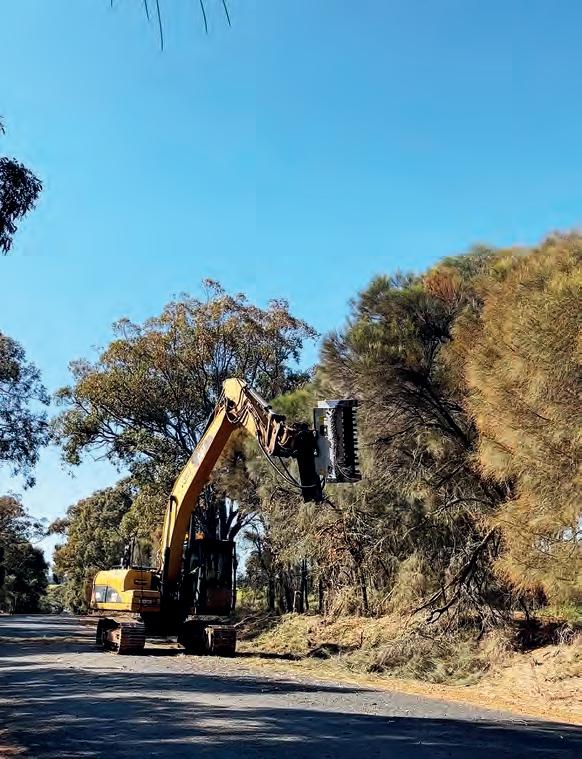

The Shire of Kojonup, Western Australia, is about 250 kilometres southeast of Perth. Kojonup can be found in the Wheatbelt, known for growing crops. Every year around November, the big road trains start carting the grain from local farms around the region to centralised grain bins. Unfortunately, many species of trees and shrubs grow along the roads encroach on the road. These encroaching pieces of flora cause damage to million-dollar truck and trailer combinations if they are not properly groomed every year. The Shire of Kojonup purchased their new machine and commissioned it in October 2022.
They are delighted with the machine. Councillors have stated that it is a vast improvement as it is more productive and efficient.
It needs to be, as the Shire of Kojonup is responsible for maintaining 900 kilometres of dirt roads and 344 kilometres of sealed roads to ensure that the trees and shrub canopies are cut and groomed to not impact and cause damage to these large road trains and their multiple trailers.
For more information, visit https://www. fae-group.com/en_AU.
52 ROADS AUGUST 2023 MACHINERY & EQUIPMENT
Alberto Rosso is the Managing Director of FAE Australia Pacific.
“CUSTOMERS ARE ASKING US TO PRODUCE VERY FUNCTIONAL MACHINE: AND THIS IS WHAT WE DO. WE TAKE CARE OF EVERY SINGLE INPUT FROM OUR USERS TO CONSTANTLY IMPROVE OUR PRODUCTS.”
The Shire of Kojonup has used FAE machinery to trim roadsides ahead of the massive wheat harvests in November each year.
THE 2023 ACT
MAJOR PROJECTS CONFERENCE
The 2023 ACT Major Projects Conference returns to Canberra at the end of this month to provide major project updates and best practice solutions for the efficient delivery of infrastructure projects across the Australian Capital Territory. The theme of the conference is centred on building the ACT’s future through essential infrastructure, necessary to accommodate the Territory’s growing population.
More than 20 industry experts will feature on the program, who will be on hand to discuss the crucial and exciting projects in the pipeline and currently underway. Adrian Piani, the ACT’s Chief Engineer, will open the two-day event and deliver a keynote address about delivering the significant infrastructure that will secure Canberra’s future. Chief Minister Andrew Barr MLA will deliver the Ministerial Address.
More than $7 billion in infrastructure
investment will help to ensure Canberra continues to be one of the world’s most liveable cities. More recently, the ACT Government released details for its longterm infrastructure plan, including for sectors across entertainment, sports, and the arts. The completion of the Canberra Hospital expansion is expected in 2024. With the ACT expected to reach half a million residents by 2027, the Government is focussing on driving private sector investment into renewal precincts, new housing and commercial opportunities. Meanwhile, infrastructure investment in the ACT has continued to create local jobs, contributing to the Government’s target of 250,000 jobs by 2025, with the target ahead of schedule.
Major projects underway in the ACT that will be featured on the program include the Commonwealth Avenue Bridge Renewal Project, the CIT Woden Campus Project, and the Canberra Theatre Redevelopment, alongside
Topics including Revitalising Central Canberra, Placemaking, Urban Renewal and Road Safety will also be featured at the conference. An expert panel discussion will focus on Social and Indigenous Inclusion in Infrastructure Projects, allowing delegates to discover insights into fostering and sustaining Indigenous engagement in industry supply chains.
The program will provide valuable networking opportunities through designated sessions and a postconference function, where construction managers, project directors, consultants and investors will have the opportunity to create new business opportunities.
Hosted by Expotrade Australia, the 2023 ACT Major Projects Conference takes place on August 22 and 23 at the Hyatt Hotel in Canberra.

roadsonline.com.au 53 EVENTS
keynote presentations from the City Renewal Authority and the Suburban Land Agency.
The 2023 ACT Major Projects Conference takes place on August 22 and 23.
NO-DIG DOWN UNDER 2023
UNDER CONFERENCE. GRAB YOUR EARLY BIRD TICKETS NOW FOR THE UPCOMING
Odedicated to trenchless technology, No-Dig Down Under is also the second largest no-dig technology event globally.
As such, the conference acts as a unique opportunity for those across the construction industry, including councils or utilities looking to make upgrades, to see the latest products and services on offer across the trenchless technology sector.
Lauren Winterbottom, No-Dig Down Under Show Director says the conference will allow stakeholders to connect directly with decision makers.
“As always, the event will also focus on new technologies and products that will help make the industry more efficient, safer, and provide more benefits for both those within the industry, and the broader community,” Winterbottom says.
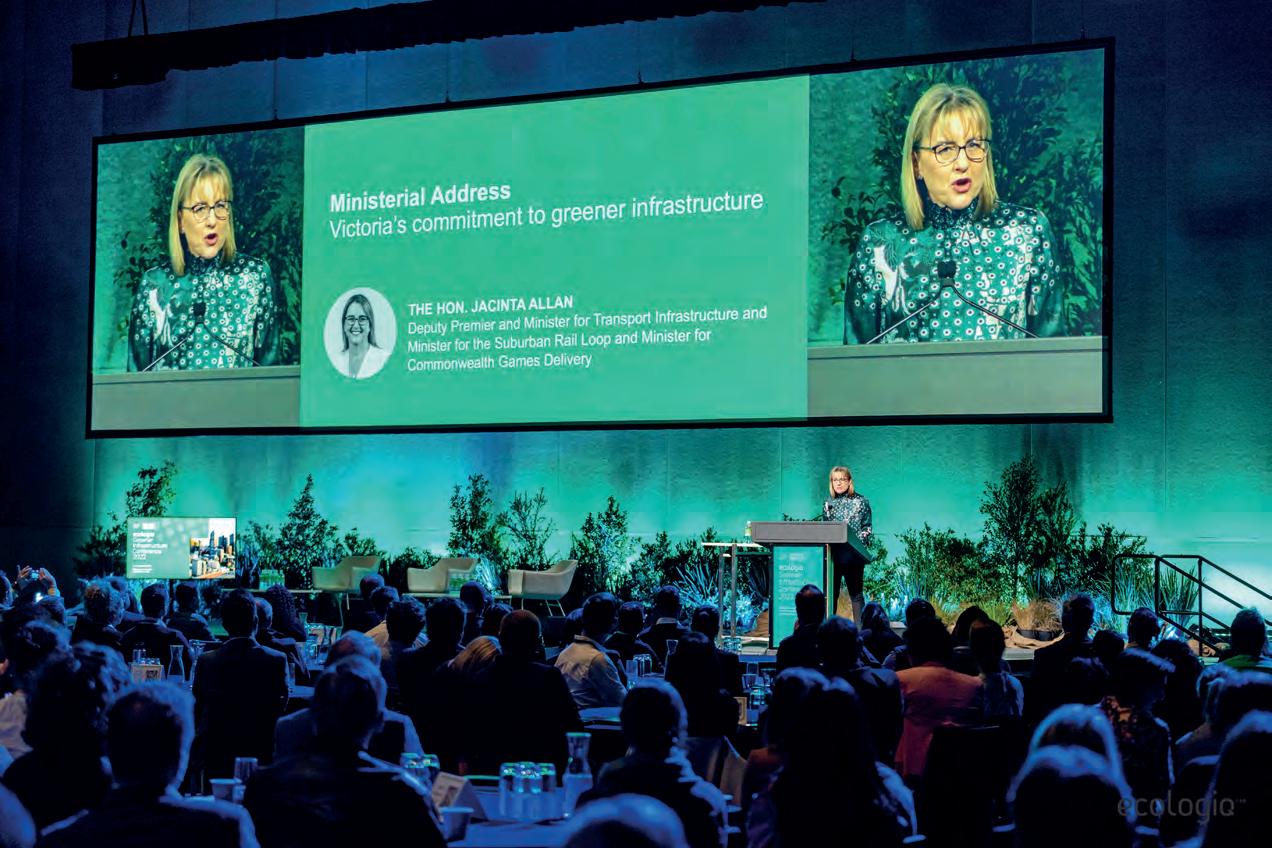
Organised in partnership with the Australian Society for Trenchless Technology (ASTT), No-Dig Down Under features a large-scale exhibition, multi-stream technical conference, training, social program and the coveted ASTT Awards.
Among the many highlights across the conference program are presentations on new installations across Australia.

Included in these new installations is the BP Kewdale White Oil Line. The project, in Perth Western Australia, forms part of the Thornlie Cockburn Link railway project.
These works include Horizontal Directional Drilling (HDD), the largest HDD component completed in a single pipeline in Australia.
Also covered is works on the North East Link project. Micro-tunnelling works, adjacent to the southern portal of the
Councils and the like will also be able to have key takeaways from a presentation focusing on the Narangba Sewer Transport System in Queensland. The region’s population threatens to outgrow the current capabilities of the Narangba Sewage Transport Scheme, as such, works were required to increase this capacity.
The presentation will focus on how the use of trenchless technology has helped to achieve operational and construction benefits, such as minimising disruptions on the local community.
Winterbottom says these works act as a good example of minimising impacts, while optimising results.
“The industry is focused on communicating the benefits of trenchless
These are just some of the many presentations in store for attendees at this years No-Dig Down Under Conference.
Along with the more practical side of the event, three sponsored social functions will also be held, including the prestigious ASTT Gala Dinner and awards evening, on September 14, providing attendees with networking opportunities in a variety of settings with industry professionals.
Attendees can expect to see include KOR Equipment Solutions, CDE, OptionX Group, UHI Machinery, Sewer Equipment Company, Robb Carr, TRACTO Australia, Pipe Core, Vermeer Australia, CEA, DCS Manufacturing and Kaiser Technology Pty.
54 ROADS AUGUST 2023
Keynote speakers at No-Dig Down Under 2022.
INFRASTRUCTURE INDUSTRY
JOINS FORCES FOR A
GREENER FUTURE
The Victorian Government’s ecologiQ program is leveraging the state’s significant infrastructure investment to boost the use of recycled and reused materials, make these products business-asusual and build local markets.
ecologiQ’s three-day conference at the Melbourne Convention and Exhibition Centre will bring together leaders in sustainability, infrastructure and research to plan pathways to a greener future and explore how to take it even further.

The 18-20 September event builds on the resounding success of last year’s inaugural conference, which was attended by almost 900 industry leaders across the infrastructure, government and sustainability sectors.
The trade hall was brimming with innovative suppliers and manufacturers of recycled products and led to some incredible success stories, including for OC Connections Enterprises – an Oakleigh-based social enterprise that employs people with disabilities and manufactures 100 per cent recycled traffic bollards.
The conference resulted in construction teams ordering more than 4000 bollards, while other suppliers of products made with recycled material – including recycled plastic
railway sleepers and pavement made from discarded tyres – have also reported a boost in sales.
This year’s trade hall will be filled with even more makers of waste-to-resource products, that are a growing part of Victoria’s $31 billion manufacturing industry.
The sector is in a prime position to supply the resources needed to deliver the Victorian Government’s transport infrastructure projects and beyond.
As Victoria transitions to a circular economy, these businesses will take on even greater importance and ecologiQ will connect them to a sustainable pipeline of demand, using the Recycled First Policy to drive action.
Major Road Projects Victoria, Director of Program Services & Engineering, Alexis Davison says the event will provide unique insights into sustainability for both private industry and government.
“I’m proud that Victoria’s biggest road and rail projects have been such a powerful force for positive change in driving a circular economy. Our continued ambition will ensure Victoria stays at the forefront of innovative use of recycled and reused materials,” Davison says.
“The flow-on economic, environmental and social benefits of Victoria’s transition to a
circular economy will be felt for decades to come.”
The Recycled First Policy requires constructors on Victorian Big Build projects to optimise their use of waste materials. It has resulted in almost three million tonnes of recycled materials being committed to transport projects.
The Victorian Government’s Recycling Victoria plan underpins these efforts with funding to grow recycled material suppliers. The transition to a circular economy is anticipated to create 3900 new jobs and boost the economy by up to $6.7 billion.
The economic, social and environmental impact of establishing a circular economy will be detailed during the conference, which will feature a range of keynote speakers, panel discussions and networking events.
Attendees will have the opportunity to learn about how greener materials are currently being integrated into transport infrastructure and how collaboration and innovation can take it to the next level.
To register, visit: https://event. publicsectornetwork.com/ereg/newreg. php?eventid=100225991&#
For more information, visit ecologiq.vic.gov.au.
roadsonline.com.au 55 EVENTS
VICTORIA’S MANUFACTURERS AND SUPPLIERS OF GREEN CONSTRUCTION MATERIALS WILL BE SHOWCASED TO THE WORLD THIS SEPTEMBER, AS ECOLOGIQ’S GREENER INFRASTRUCTURE CONFERENCE RETURNS.
Jacinta Allan presenting at the 2022 Greener Infrastructure Conference.
The Foundation Awards recognise both individuals and businesses who excel in the industry and bring together different industry segments to one room on one night for a glamorous night of celebration.






Proudly sponsored by MHD Supply Chain Solutions Tickets on sale now
Celebrating excellence in the construction industry
foundationawards.com.au
foundationawards.com.au
20. 09. 2023 Melbourne Held in conjunction with
A PEEK INSIDE
CONSTRUCTION EXPO
ROADS & INFRASTRUCTURE PROVIDES A SNEAK-PEEK INTO THIS YEAR’S INSIDE CONSTRUCTION EXPO.
An event dedicated to major commercial and civil projects in the Australian construction industry, Inside Construction Expo is being held from 20 to 21 September 2023 at the Melbourne Convention and Exhibition Centre.

With a robust conference program featuring top-level speakers, a worldclass exhibition showcasing the latest equipment and technology, and the Inside Construction Foundation Awards celebrating talented industry individuals and businesses, Inside Construction Expo 2023 is a must-attend event.
Set to connect constructors with OEMs, sub-contractors, and operators, Show Director Lauren Winterbottom says the event is positioned to foster the successful delivery of projects in the pipeline.
“Inside Construction Expo was created to fill the gap in events targeted at major commercial and civil projects,” she says.
BACKGROUND FOR INSIDE CONSTRUCTION EXPO

In the 2022-23 Federal Budget, the Government increased its 10-year infrastructure investment pipeline to a record $120 billion. The 2022-23 Victorian Budget outlines $85.3 billion in general government spending on infrastructure over the next four years.
Many projects are planned nationwide over the next decade, but considerable industry challenges remain. Inside Construction Expo 2023 will provide a platform to canvass solutions to the issues hampering the commercial and civil construction sectors.
With four stages across the event focusing on Health, Safety and Wellbeing; Training, Education and Careers; Digital Transformation and Connectivity; and Construction Productivity, there will be a wealth of industry information and solutions.
“Throughout the conference, attendees can expect to hear from executive-level representatives from Australia’s major constructors and suppliers, alongside research and education bodies and government figures,” Winterbottom says. “The exhibition show floor spans up to 15,000 square metres across 10 bays and will display the latest construction machinery and equipment.”
Inside Construction Expo is backed by support from several valued organisations and media partners. Without this support, Winterbottom says, the event would not be possible.
“We’re pleased to partner with industry associations and peak bodies to bring Inside Construction Expo to life,” she said. “Specialist in assembly and fastening materials, Wurth Australia has come on board as a supporting sponsor for the Expo.”
“We are thrilled to be part of the 2023 Inside Construction Expo, which promises to be a game-changer for the industry. This event will provide an unparalleled opportunity for us to showcase our latest products and innovations, as well as to connect with fellow professionals and share insights and expertise,” says Serge Oppedisano, CEO of Wurth Australia.
Winterbottom also pointed to intelligent positioning solutions provider Position Partners and manufacturer Komatsu as proud conference sponsors. In the leadup to the event, over 19 industry-leading publications continue to cover the latest in Expo news extensively.
“We have seen their coverage reach more than 80,000 decision-makers across multiple sectors,” a spokesperson says.
“We’re excited to connect with delegates at Inside Construction in Melbourne this year. Events are experiencing a resurgence post-lockdown, and nothing beats inperson conversations, especially when it comes to showcasing new technology,” says Gina Velde, Marketing and Communications Executive Manager of Position Partners.
2023


INAUGURAL FOUNDATION AWARDS
As part of this year’s Inside Construction Expo, the Foundation Awards will be held on 20 September 2023 to celebrate the individuals, businesses, and projects championing transformation in the construction industry.
With a focus on showcasing the initiatives that seek to promote core standards around safety, diversity and environmental sustainability throughout major and local projects, the Foundation Awards will be a premier event on the construction industry calendar.
PLAN YOUR ATTENDANCE
Whether you’re a project manager, superintendent or an engineer, all professionals in the field of construction are invited to attend Inside Construction Expo 2023. Registration is free for both the exhibition and the conference. You’re welcome to come and go as you please and curate a conference experience that suits you.
As the construction industry continues to face ongoing challenges, from skills shortages and lack of digitisation to poor productivity and inadequate safety management – this year’s Inside Construction Expo will encourage transformation and a brighter future for the sector.
For more information, visit www.insideconstructionexpo.com.au
roadsonline.com.au 57 EVENTS
The 2023 Inside Construction Expo will be held at the Melbourne Exhibition Centre on September 20-21.
EME2 DEVELOPMENTS, HOW FAR HAVE WE COME?
THE AUSTRALIAN FLEXIBLE PAVEMENT ASSOCIATION’S 2023 EME2 EVENT SHOWCASED OPPORTUNITIES IN EME2. KEY SPEAKER DR ERIK DENNEMAN EXPLAINS THE IMPORTANCE AND SUCCESS OF THE EVENT.

The Australian Flexible Pavement Association recently conducted the Industry Technical Panel Event 2023, focusing on EME2.
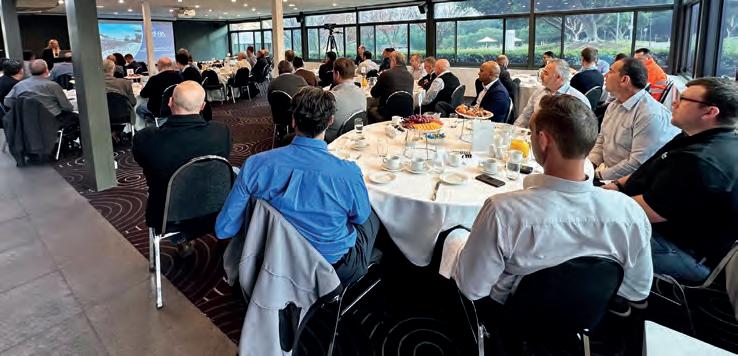
Held at the Waterview In Bicentennial Park, Sydney, the event saw an interactive discussion with experts in EME2 technology from across industry around the latest in materials and mix design, manufacturing and placement best practices, pavement design and case studies, Transport for NSW specifications and a Q&A session for attendees.
Dr Erik Denneman, Global Technical Manager – Puma Bitumen was one of the keynote speakers. He says the event allows industry and government to crucially stay up to date when it comes to sustainability and innovation.
“This session was one of many that we’ve done over the years. The technology has been very successful in Queensland, but we always intended on this being a national initiative,” he says.
“We’re starting to make inroads and it’s great to see because the savings [of using EME2] are tremendous. You’re talking about 25 per cent material savings in particular pavement structures.”
shown over and over again and these are undisputed. It’s really important to get the whole industry on board, especially across the consulting fraternity, and get the product specified,” he says.
“It’s really an awareness session.”
Denneman hopes that awareness for EME2 can increase on a national level.
“We know from experience that once you start using EME2, nothing else stacks up in terms of cost and material use. The cost savings are significant,” Denneman says.
“It’s still a real journey, but EME2 can’t be underestimated in terms of its sustainability
Denneman says the main aim of the Industry Technical Panel Event was to get the “word out” and shed more light on the knowledge gained and practical experiences over the last year.
He adds that such presentations and discussions also aim to further support the use of EME2 as a more costeffective technology, in comparison to conventional asphalt.
“The technology has now been here for more than 10 years. There’s been savings
impact. We talk about reduce, reuse and recycle. There’s a reason why we reduce is mentioned first, because real sustainability comes from reducing the amount of material used. Recycling is of secondary importance.”
Dr Erik Denneman was joined by other key leaders in the space, presenters included Trevor Distin (Technical & Marketing Manager – COLAS), Paul Morassut (Technical & Innovation Manager, Infrastructure Services, Eastern NSW – Fulton Hogan) and
Denneman says that this AfPA initiated event and other similar seminars are “absolutely critical” is supporting wider adoption of such technologies.
“These events have always been popular; it was really well attended again. Events such as this one are key in rolling out technology like this,” he says.
“I think it was one of the great success stories for the industry and the association.”
Further Industry Technical Briefings are scheduled concern Crumbed Rubber in August 2023 and Warm Mix Technologies.
58 ROADS AUGUST 2023
Sean Dorahy (Pavement Manager (Asphalt Technology) Transport for NSW).
The 2023 Industry Technical Panel Event was well attended.
“WE’RE STARTING TO MAKE INROADS AND IT’S GREAT TO SEE BECAUSE THE SAVINGS [OF USING EME2] ARE TREMENDOUS. YOU’RE TALKING ABOUT 25 PER CENT MATERIAL SAVINGS IN PARTICULAR PAVEMENT STRUCTURES.”
19th AfPA International Flexible Pavements Conference




Safely Paving the way to Carbon Zero

30th Oct - 31 Oct -1st Nov 2023 | BCEC Brisbane QLD
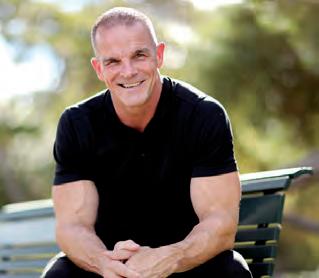


Program Overview



roadsonline.com.au 59






25 OCTOBER 2023 | MELBOURNE www.wasteawards.com.au/tickets TICKETS ARE NOW ON SALE Recognising those across the waste and resource recovery industry, and acknowledging and celebrating outstanding achievements within this sector. To purchase tickets visit SPONSORS HELD IN CONJUNCTION WITH
CONTINUOUS TEEROFFS DELIVERING BENEFITS TO WA INFRASTRUCTURE
The Bunbury Outer Ring Road (BORR) is a new 27-kilometre, four lane ring road in Western Australia that connects the Forrest Highway with Bussell Highway. Being constructed with continuous Teeroffs, the project is part of the post-COVID-19 recovery infrastructure programme and is the largest infrastructure project ever undertaken in the state’s south-west.
First proposed in 2009 – with construction beginning in 2016 – the BORR consists of dual carriageways, roundabouts, and overpasses.
Funded eighty percent by the Federal Government with the remainder coming from the State, the project’s $852 million cost included around $450 million spent with local south-west businesses and $30 million on Aboriginal businesses, with Aboriginal employment a priority.
The project is also an example of sustainable infrastructure development, designed with environmental considerations in mind. To minimise the impact on the surrounding flora and fauna, the road features wildlife crossings that allow animals to safely cross the road without endangering themselves or motorists.
The BORR is being constructed by the South West Gateway Alliance consortium, comprising Acciona, NRW Contracting, MACA Civil, AECOM and Aurecon.
Key to the project are 139 precast concrete Teeroff beams, weighing 191 tonne and measuring 41 metres long, 2.2 metres deep by 4.5 metres wide. They have been manufactured for the project by Australian Precast Solutions at their newly built and commissioned factory in Bunbury.
The beams are designed as continuous Teeroffs, typically used in the construction of long-span bridges and other large infrastructure projects. Similar in shape to standard Teeroffs, with a horizontal top flange and a vertical web,
PROJECT: Bunbury Outer Ring Road (BORR)
LOCATION: Western Australia
CLIENT: Main Roads Western Australia
CONSTRUCTION: South West Gateway Alliance consortium (Acciona, NRW Contracting, MACA Civil, AECOM and Aurecon)
MASTER PRECASTER: National Precast Master Precaster Australian Precast Solutions

they are designed to be much longer, often spanning hundreds of meters. They are typically constructed as simply supported, with a link slab providing a continuous concrete running surface without any intermediate deck joints.
Their main advantage is their ability to support very heavy loads over long distances without the need for intermediate supports. This is achieved by joining multiple beams together with a series of welded or bolted connections, creating a continuous beam that can span the entire length of a bridge or other structure.
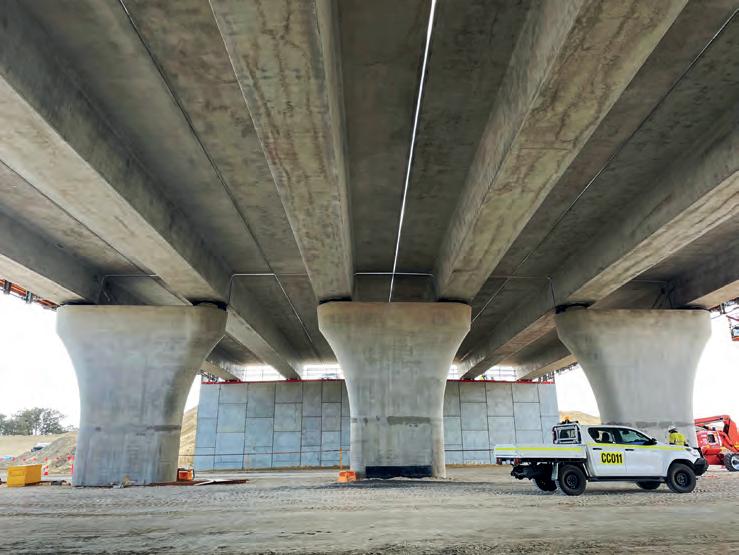
Their specification has become increasingly common in Western Australia in the last five years, primarily in response to project specific constraints such as limitations on pier
widths and structural depths, and heavily loaded edge beams on Single Point Urban Interchange (SPUI) bridges. They have been used in Perth’s $1 billion Gateway WA project that upgraded the road network around Perth Airport, the Reid Highway Duplication over the Mitchell Freeway and the northern section of NorthLink WA.
When complete, the Bunbury Outer Ring Road will be a vital artery that connects the city’s northern and eastern suburbs with the South West Highway, easing traffic congestion and reducing travel times. As well as improving access to Bunbury and other regional destinations, it will alleviate the convoluted previous freight network that impeded freight and transport efficiency.
roadsonline.com.au 61
Works on the Bunbury Outer Ring Road in Western Australia.
CONTRACTS IN BRIEF
NEW SOUTH WALES
Contract awarded for Inland Rail enhancement works
Martinus Rail has been awarded a $403.5 million contract for enhancement works on the Inland Rail project. Connecting Melbourne and Brisbane via regional Victoria, New South Wales and Queensland, Inland Rail is Australia’s largest freight rail infrastructure project and will aim to better connect businesses, manufacturers, and producers to national and global markets, and create new opportunities for Australian industries and regional communities. The enhancement works, between Stockinbingal to Parkes and Albury to Illabo sections of the project, will enable double-stacked freight trains to run between Albury and Parkes and will include bridge upgrades and track lowering works. Station precincts in Albury, Wagga Wagga and Forbes will also be enhanced and an additional crossing loop will be constructed at Daroobalgie. The new enhancements will enable double stacked trains to travel from Beveridge to Narromine by 2027.
VICTORIA
$171M contract awarded for level crossing removals
A $171 million contract has been awarded to an alliance for works on three level crossings in Melbourne’s south-east. The alliance, compromising Fulton Hogan Construction, Metro Trains Melbourne (MTM) and the Level Crossing Removal Project, will deliver works to level crossings in Beaconsfield, Progress Street and Dandenong South. At Station Street, Beaconsfield a new road bridge will be built over the rail line, allowing the level crossing to be removed sooner. A new road bridge will also be built to replace the level crossing at Progress Street in Dandenong South. Additional works will also commence to upgrade the intersection nearing the road bridge to improve traffic flow and ease congestion. Major works will begin at Beaconsfield and Dandenong South later
this year. Works will get underway early next year for the level crossing removal works in Officer. All three level crossings will be removed by 2025.
WESTERN AUSTRALIA Contractors shortlisted for highcapacity signalling project
Two contractors have been finalised to design, supply, construct and maintain a new high-capacity signalling system for Western Australia’s Public Transport Authority. The two proponents include Alstom Transport Australia Pty Ltd & Downer EDI Works Pty Ltd (ADJV); and Siemens Mobility Pty Ltd, Siemens Mobility GmbH and Wabtec Control Systems (SafePerth). The new system will aim to increase the capacity of the network, to satisfy the future requirements by replacing Perth’s ageing urban rail network control systems. The high-capacity signalling system will provide more modern, integrated, communications based train control system that will allow more trains to run more frequently. The system will achieve this by sending information in real time to the Public Transport Operations Control Centre that’s currently under construction in East Perth. This new centre will monitor the speed and location of every train on Perth’s rail network. The high-capacity signalling system project will be rolled out over the next 10 years. The contract for these works is expected to be awarded in 2024.
Contract awarded for 219 megawatt battery construction
CIMIC Group’s UGL has been selected for the design and construction of the Collie Battery and associated energy infrastructure in Western Australia. The Collie Battery is a 219MW/877MWh battery energy storage system (BESS) to be stored in the Western Australian town of Collie. Neoen’s Collie Battery will provide up to four hours of energy
storage and will connect to Western Power’s substation which is part of the South-West Interconnected System (SWIS). Neoen, which awarded the contract to UGL, is a specialist, independent producer of renewable energy. Neoen says the Collie Battery will aim to provide short duration storage in the peak times to ease pressure on the grid. The battery will be able to provide grid stability and other grid services which will also encourage more integration of more renewable energy into the network. UGL will be responsible for the design, construction, testing and commissioning of the 33/330kV substation, the installation of the Tesla2 XL Megapacks and the associated balance of plant infrastructure. UGL’s scope also includes the replacement of an existing bridge and construction of an access track to the site. UGL has commenced work on the project, which is expected to be completed in late 2024.
NEW ZEALAND Downer awarded $540M road maintenance contract
A $540 million road maintenance contract has been awarded to Downer for works in New Zealand. As part of the contract, Downer will deliver asset management, surfacing and renewals for road corridors, footpaths, bridges, culverts, lighting and on-road cycle lanes for the Hamilton City Council of New Zealand’s North Island. The contract has a maximum term of 10 years. The contracts initial term of five years will include provisions for extensions of three years, followed by a further two years. Downer has a long relationship with Hamilton City Council dating back to the Hamilton Infrastructure Alliance which commenced in 2013.

62 ROADS AUGUST 2023 CONTRACTS & TENDERS
ROADS & INFRASTRUCTURE PROVIDES AN UPDATE ON SOME OF THE CONTRACTS AND TENDERS RECENTLY AWARDED OR PUT TO MARKET ACROSS THE AUSTRALIAN AND NEW ZEALAND INFRASTRUCTURE SECTORS.
Built to withstand a variety of conditions the Atlas Copco range of lighting towers are robust and offer unrivalled efficiencies ensuring they are both reliable and can operate for an extensive period of time.


• Fuel efficient, ensuring longer running hours
• Specially designed directional optics offering incredible light distribution
• LED HiLight towers achieve up to 6.000 square-metres of light coverage with an average level of 20 luxes
• A life expectancy of more than 50.000 hours
• Aluminium casting, providing heavy duty protection

Small Asphalt Rollers Compact and Smart

DYNAPACS SIXTH GENERATION SMALL ASPHALT ROLLERS - READY TO ROLL

Dynapac’s sixth generation CC1300VI and CC1400VI small asphalt rollers are designed and built to meet the construction industries ever evolving and tough conditions. The new design has resulted in a robust, comfortable and modern machine that still achieves the market leading compaction results that Dynapac is renowned for.
The new generation has a unique cross mounted engine providing exceptional access to engine and hydraulic components. This new engine concept and the slideable operators seat combine to increase visibility to drum edges and the greater worksite. High vibration frequency, offsetability of the drum, high efficiency eccentrics and options such as edge press devices and chip spreaders all improve compaction efficiency and versatility.
SPEAK TO OUR TEAM TODAY FOR AVAILABLE FINANCE OPTIONS! PH: 1800 733 782 www.atlascea.com.au INNOVATIVE SOLUTIONS FOR PORTABLE ENERGY
Your Partner on the Road Ahead PROUD DISTRIBUTOR
dynapaccea.com.au 1300 788 757




Celebrating 100 years of bitumen emulsion Spraying COLd ASphalt (COLAS) Victoria, Australia, 1930s www.sami.com.au 1800 BITUMEN









































































































































































